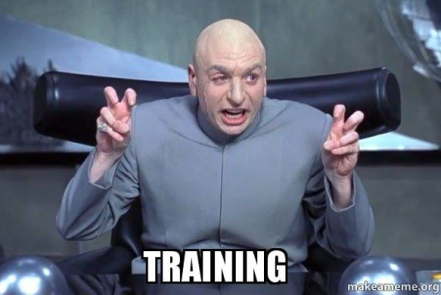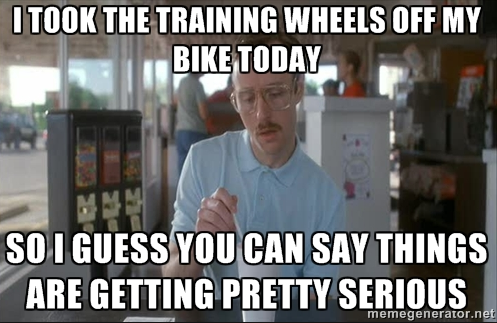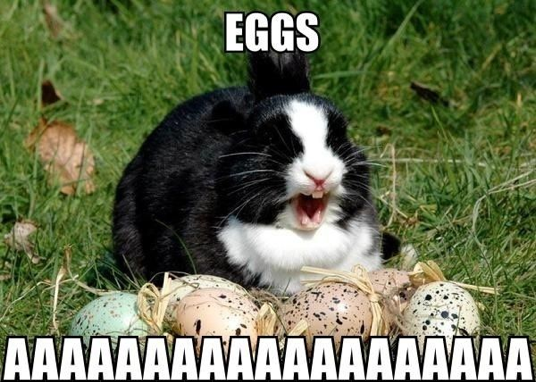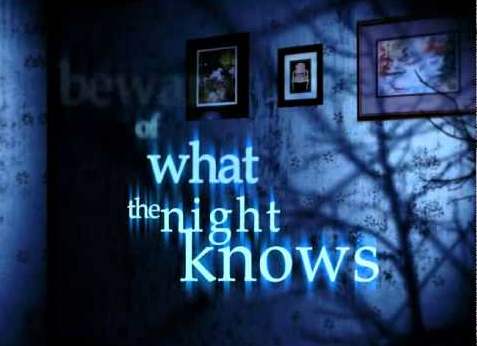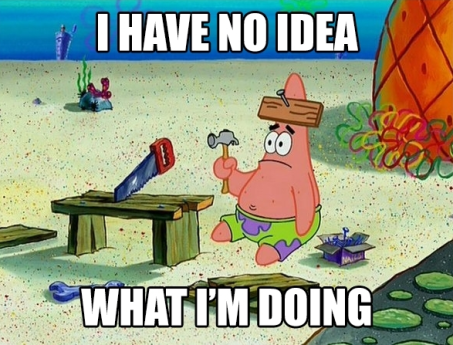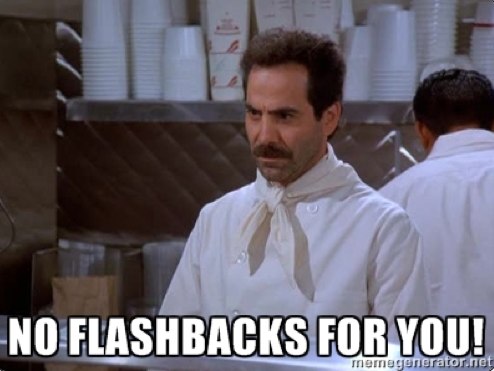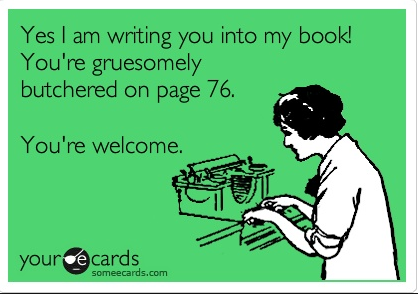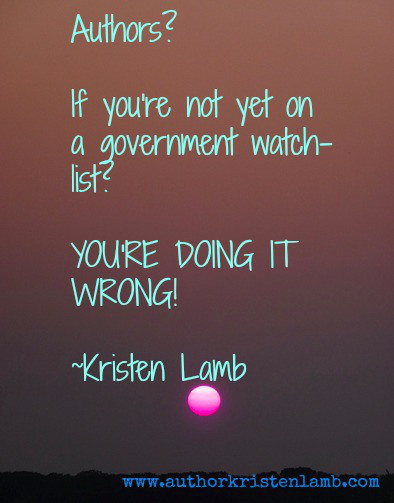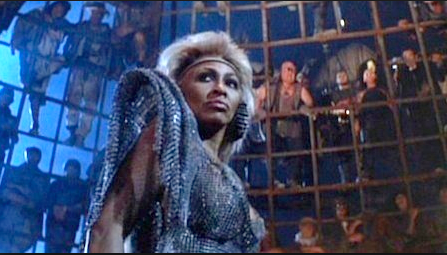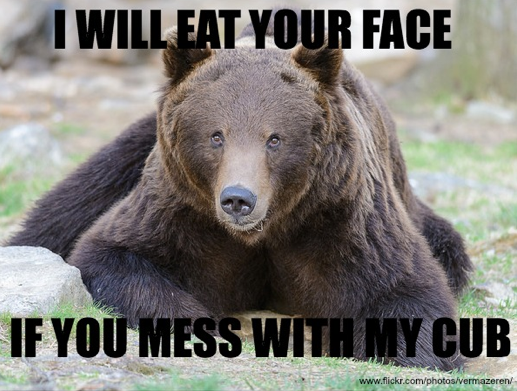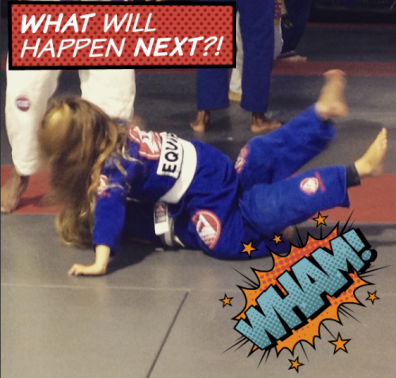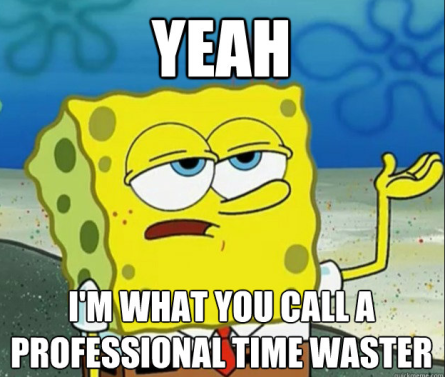Kristen Lamb's Blog, page 50
June 22, 2015
Brave New Publishing—Amazon Testing Paying Authors by the Page

Image via Flickr Creative Commons, courtesy of Kenny Louie
We live in a really strange time and technology has altered the publishing landscape into something we could never have imagined in 1999. The changes have been nothing short of science fiction. Well, buckle your seat belts because it is about to happen again. Just about the time we kind of get the knack of things, it seems there is yet another upheaval and we have to adapt.
This is why I wrote my social media branding book Rise of the Machines—Human Authors in a Digital World. My methods keep us from having to tear down and start over every time something in the tech world goes topsy-turvy and we can maintain brand momentum no matter what. But this time it isn’t social media throwing the curve ball.
It is Amazon.
I’ve worked hard to be balanced in all my opinions about publishing. Yes, New York had (has) its problems, but when many authors were railing to tear down traditional publishing, I worked hard to show that there are two sides. Amazon might favor authors and genuinely be on our side, but that could change so be wary. I detailed a lot of my concerns a couple years ago (2012!) in a post, Amazon—Beware of Greeks Bearing Gifts.
Just so y’all know, sometimes I scare myself with my predictions because science fiction easily becomes dystopian fiction. Just a slice…
Amazon is the 500 pound gorilla in the room, only we can’t see it because it is hidden neatly inside a giant digital Trojan Horse. Don’t get me wrong, I buy plenty of stuff off Amazon, and they have done a lot to help shake up the industry and get New York hopping. Without them, I don’t believe we would have seen so many miraculous changes so quickly.
Ah, but every fairy tale has a dark side…
…once the competition falls away and Amazon burns New York to the ground? What happens to the writer? What happens when we fall asleep and it is safe for Amazon’s Trojan Horse to unleash the gorilla?
When NY is razed and Amazon has no real competition, do they have to keep giving us the same sweet royalty rate? And they already have a nasty reputation. They pulled that little stunt with a publisher who dared to cross them. Two years ago, they removed all the “Buy Buttons” off all the Macmillan titles. So, if Amazon will use the brass knuckles on a major publisher that crossed their path…what about us? The little guys? What happens when a writer miffs them and they unleash the gorilla?
Lord Acton so eloquently said, “Power corrupts and absolute power corrupts absolutely,” and that statement is as relevant today in 2012 as it was in 1887, because while industries change and technology changes, humans are timeless. So what happens when it’s Amazon’s turn to hold all the keys to the kingdom? Will they use them any differently than those they crushed to gain them?
Unlike NY, Amazon isn’t searching through all the millions of wanna-bes for a handful of investments. Anyone can publish quickly and cheaply. Writers are running to them! The problem with this is they get all the benefits of being a publisher without any real sacrifice.
A lawyer friend of mine noted that when writers publish on Amazon, we all agree to the same blanket contract. This gives Amazon all the perks of being a publisher without concerning itself with any of the traditional protections for the writer.
And, I understand that writers haven’t been treated all that great in the past, but we need to ask the tough question. Is this future better? Is trading one dictator for another a good plan?
When I wrote this, I had reservations about digital publishing. Granted I love it. When you write books on social media, traditional publishing just doesn’t fit and I would never have been able to publish at all without it. I also love the global distribution. But, the idea that our words are stored in the ether gives me pause. In this post I just cited, I mentioned the pace of expansion, how quickly Amazon was making money. Yes, a 57% gain in one quarter was awesome, but…
As a former salesperson, I knew there would come a time when that windfall would taper off.
What then?
I ran across this article yesterday on Gizmodo. Amazon is launching a new “idea.” They are experimenting with the notion of paying authors based off the number of pages actually read. Yes, it is a real thing. I had to look too. See HERE.
According to Gizmodo’s article:
“Beginning on July 1st, authors who self-publish through Amazon’s KDP Select Program will become part of a new publishing experiment. Currently, Amazon divvies up a pot of money to its native authors each month, based on the number of times their e-Books are “borrowed” through two separate Kindle services: Kindle Unlimited, a standalone, $9.99 / month subscription service, and the Kindle Lending Library, an Amazon Prime membership perk. In the new scheme, authors will be paid for each page that remains on the screen long enough to be parsed, the first time a customer reads the book.”
Before anyone thinks I am anti-Amazon or yelling “FIRE!”, I’m not. In fact, this is too new for me to even fully know how I feel. Right now this only affects books borrowed.
For all we know, this experiment remains in the realms of a narrow section of the overall Amazon model (the lending part) and the impact is not that large or might even work out well for authors. But I do think we have the responsibility to be watchful and if I am really honest? This trend scares me more than a little bit.
Why?
Because businesses are in the business of making money, not giving away money. If they can find a way to increase profit margin, they will. Sometimes this works in our favor. I.e. Efficient distribution. Sometimes? It gets a bit 1984 and paying us by the page seems way tempting to those who are in the business of running publishing empires.
Benefits of Being Paid by the Page
Yes, I see the “benefits.” As it stands, a writer who publishes an awesome page-turner is paid the same per unit as someone who publishes a book unfit for human consumption. Additionally, writers who publish longer works are paid the same as authors of short works.
Under this plan, the author of a riveting 120,000 word epic fantasy will be paid more than an author of a riveting 50,000 word short. Authors of works so boring it would peel the paint from the walls will get paid the same, no matter the length.
To Amazon’s credit, this is actually a very fair way of doing business with writers.
But this notion of being paid by the page is concerning. Yes, it is all well and good when this “experiment” is part of a small slice of the Amazon publishing model, but what if this expands? What if the test “works so well” that it becomes part of the overall publishing model? In ten years, how will we be making our money? Off books sold? Pages read? A combination of both? Is this good or bad? I don’t know.
But, no matter what, we are wise to pay close attention. It is our future on the line.
Separating the Slush
I can see one major benefit from this notion of “paid by the page.” I think it might be the ultimate playing field leveler. Why? One of the largest problems that has faced the Digital Publishing Paradigm is the slush. In the traditional model, we had gatekeepers to separate “good books” from “bad books” or even simply delay “books that needed more work and weren’t ready”.
In the past few years, the slush pile has been offloaded to the readers. To combat this, we’ve seen the rise of sites like Goodreads to help guide readers to the good stuff. Book reviews and book reviewers have also tried to intervene. Yet, despite these noble efforts, we have also seen book reviews grossly abused (I.e. sock puppets inflating bad books and trolls tanking good books). We’ve also witnessed all kinds of algorithm abuse.
If we trace the trajectory of this idea, how long will potential readers rely on reviews? If I were Amazon, I would start promoting works based of rates of completion. Could we be witnessing the birth of an entirely new form of ranking?
My book has a 87% rate of completion instead of My book was #1 in Western Romance.
If we (readers) can judge off rate of completion, this could change everything. Sure Big Shot Mega Author with a gajillion-dollar marketing budget sold X books, but the book only had a 34% rate of completion. But Jane Newbie who has thus far only sold Y amount of books and has only her social media for marketing has a 97% rate of completion. Hmmm, this might impact my decision.
Ugh, but the dark side of this…
If rate of completion extends into BOOKS SOLD (not just borrowed) as a way of accurate promotion, how long until the world can see that no one made it past Page 50 of our book? Before, we simply had to sell copies of our book. Now? We also have to face another layer of judgement?
I mean, the good side is that trolls and sock puppets will no longer impact us the same and if we write really good books we are rewarded, but am I the only one feeling the need for a drink pressure?

Original image via Flickr Creative Commons, courtesy of Stoere Schrijfster.
The Writing Matters No Matter What
This is why for eight years I have worked very hard to train you guys for success in the new age of publishing. In the 21st century publishing world, we must have a brand and a viable platform. But, we also must write excellent books. It is why I have blogged and taught on all aspects of publishing. Social media is limited in power if the book is weak and vice versa. Our writing remains our greatest sales tool.
This first five pages are essential (and now it seems the rest of them are about to be PRETTY important as well).
As an editor, I can almost always tell all that is wrong in a book in 20 pages or less. Usually, within 5 pages I can spot all weaknesses and bad habits that are likely to repeat throughout the work.
I really don’t need to read the whole thing.
For instance, if a writer shifts P.O.V. so much I can’t keep up with who’s head I am supposed to be in? I am fairly sure this is going to continue. If a writer overwrites and drowns me in purple prose? Probably not going to start writing lean and clean after page 25. And, there are more red flags the book is weak, but we aren’t talking about those today. I HIGHLY recommend Les Edgerton’s book Hooked and I am also about to teach my First Five Pages class if you want some more hands-on instruction.
This is also why I have spent so much time discussing flashbacks lately and how to use them well. I know they are a legitimate literary device. I know they can be done well and are done well. But, I also know that flashbacks used poorly are probably the single greatest reason a reader will stop reading. And, in a world where we are paid by the page? That becomes more than a big deal.
We will continue talking about “bending time” next post. We are going to explore non-linear plotting. My problem with the term “flashback” is we tend to use it to broadly and lump every instance of going back in time into one term. So we are going to unpack some works that seem to “flashback” all over the place, but we will see they really don’t. We will dissect this unique way of delivering story.
In the meantime, does this “paid by the page” freak you out too? Or do you think this might be the great playing field leveler we have all been waiting for? Sure, Big Shot Writer sold X books, but only has a 25% completion rate, where as Small Guy Writer sold fewer books, but has a 90% completion rate? Would this influence your purchasing?
Do you like the idea of being paid by the page? Do you think it rewards good writing? Do you think it is one more reason writers are going to need therapy?
I think it’s hard enough selling copies of books, but if I saw that those who bought only made it 50% through? It probably would depress me, but maybe I could look at the book more closely and fix WHY people weren’t finishing. Maybe it would be the world’s most accurate critique. Maybe I would be grateful. And maybe I am a Chinese jet pilot.
What do you think? This revelation is so new, I am unsure even what I think, so I would appreciate your opinions.
I LOVE hearing from you!
To prove it and show my love, for the month of JUNE, everyone who leaves a comment I will put your name in a hat. If you comment and link back to my blog on your blog, you get your name in the hat twice. What do you win? The unvarnished truth from yours truly. I will pick a winner once a month and it will be a critique of the first 20 pages of your novel, or your query letter, or your synopsis (5 pages or less).
Classes:
Before we go, y’all asked for it so here goes. I have two classes coming up. The class on log-lines Your Story in a Sentence—Crafting Your Log-Line is $35 and as a BONUS, the first ten sign-ups get to be victims. IF YOU ARE QUERYING AN AGENT, YOU NEED A PITCH. I will pull apart and torture your log-line until it is agent-ready for FREE.
Beyond the first ten folks? We will work out something super affordable as a bonus for being in the class so don’t fret. I’ll take good care of you. AND, it is two hours and on a Saturday (June 27th) and recorded so no excuses :P .
I am also running Hooking the Reader–Your First Five Pages. Class is on June 30th so let’s make Tuesdays interesting. General Admission is $40 and Gold Level is $55 but with Gold Level, you get the class, the recording and I look at your first five and give detailed edit.
Our first five pages are essential for trying to attract an agent or even selling BOOKS. Readers give us a page…maybe five. Can we hook them enough to part with cold hard CASH? Also, I can generally tell all bad habits in 5 pages so probably can save you a ton in content edit.
For those who need help building a platform and keeping it SIMPLE, pick up a copy of my latest social media/branding book Rise of the Machines—Human Authors in a Digital World on AMAZON, iBooks, or Nook.


June 17, 2015
More than Just a Flashback—Introducing the Easter Egg

Image courtesy of NASA
So we have spent a couple posts talking about “flashbacks” and I need to take a moment to expound on something. I was a naturally good editor. It’s how I got my start. But I would cut things out or change things because in my gut they didn’t work. And, I was pretty much always correct because I did have solid story instincts.
But I also have a passion for teaching. In my mind, it did NO good to cut something or change something for a writer (even if it made the story BETTER) if I had no way of articulating my instincts, of explaining WHY it didn’t work and HOW to do it better.
I, personally, found our “writing vocabulary” too broad. I mentioned the term antagonist last time. There was no such word as Big Boss Troublemaker until I coined it. I had to find a way of explaining the concept to a new writer who might not naturally be good at plotting. I had to be able to explain that there would be ONE antagonist responsible for creating the story problem, and this antagonist was not necessarily “bad.” I made up a term so the writer could keep that particular and necessary antagonist separate from all the other “types” of antagonists in the story.
For instance, in Finding Nemo, Darla the Fish-Killer is the BBT, yet she has only several minutes of screen time. She is responsible for the entire story problem because had she wanted a kitten for her birthday, Nemo would never have been taken. Who is responsible for most of the tension and conflict is actually ALLY, Dori. Dori wears the “antagonist” hat most of the movie, but she is NOT the BBT.

Image via Pixar’s movie “Finding Nemo”
I have found the same phenomena in this notion of “flashbacks”—ONE umbrella term to include every single instance of shifting back in time which we talked about last time. And, since many of the prestigious writing instructors will say flashbacks are a no-no, I sought (through this series) to be more specific with the term training wheel flashback.
The training wheel flashback is the flashback editors will cut because they are pieces that obviously detract from the story. They are used to prop up weak writing and they are very easy for a skilled editor to spot. Think training wheels. You look at a bike and training wheels are pretty hard to miss. They stick out like, like, like….TRAINING WHEELS.
The training wheel flashback is the one that writing teachers will seek to take away because, if we rely on them, our writing will remain weak. Again, training wheels. If we leave those suckers on, we never learn to truly ride a bike.
Then, there is simply bending time which can be done any number of ways and I will add some other invented vocabulary words because I can :D . Again, to my knowledge, the term “bending time” did not exist in this context until Monday of this week. This (in my mind) is when a flashback is used properly as a literary device.
For me, it helps to have semantics distinguish the flashback that will be cut and the bending time that will work.
Of course we can go back in time and we will talk about ways this is done well.
But maybe I am not all that bright or maybe I have the ego of God a writer and feel it is okay for me to create completely new teaching terms for literature as we know it. It helps me keep them straight because if we use the same terms for everything? It just gives me a brain cramp and it makes it tough for me to teach how time-shifting is done well and explain to a newbie writer why, on Page 3, she really didn’t need to go back and explain why the bride chose to do the wedding in Mexico and not Napa.
Things to Remember About “Flashbacks”
So in the comments and even on Facebook, I have had people mention books or movies that were great and won awards that shifted backwards in time. I agree! Some of my favorite movies shift in time. It’s why I have spent a year studying time shifting to articulate how Pulp Fiction differs from the stuff I have cut over the years (and I have seen thousands of pieces of writing in all genres).
But what I want to point out is that these books or movies aren’t using training wheel flashbacks. The works that DID use training wheel flashbacks met with a slush pile or were rejected or were self-published and buried in bad reviews from confused readers.
If we are seeing a novel on the NYTBS list and it goes back in time? The author did it WELL. But what can happen is we see all these finished stories and popular stories and then use those successes as a basis for why “flashbacks” are fine. Unless you have worked as an editor, it is unlikely you’ve experienced the thousands of training wheel flashbacks that were AWFUL and derailed the story.
Another thing to remember about “bending time” in a movie versus a novel is in a movie, the experience is far more passive when we watch film. We see different actors so it is easier to keep up. In a book, when we only have black letters on a white page, this is much harder mental work for the audience. Again, it CAN be done. We simply need to be aware that the mediums are different and take that into account.
Also, and I will reiterate, anything CAN be done. My goal is not to hammer rules into your heads so you never break them. My goal is to hammer rules into your heads so that if and when you break them it is with intent and it is to support strong writing not prop up weak writing.
We must learn the rules to break the rules. Yes, Jimi Hendrix reinvented music as audiences knew it, but he kind of had to learn how to play the guitar first ;) .
For the sake of brevity, today we are only going to look at a type of standalone flashback I am going to call the Easter Egg Flashback. In gaming, designers will insert a hidden video game feature or a surprise that will be unlocked by completing certain game tasks or techniques and that is called an Easter Egg. Thus, I am pilfering this idea and creating my own definition.
In fiction, we see these when we encounter only one flashback or maybe just a few flashbacks. Easter Egg Flashbacks aren’t part of a true parallel timeline. They are short and sweet and intriguing. Usually, we have been in the story a while and the story will go back to another time and place and it will offer some kind of information we don’t yet understand but intrigues us. It isn’t until we complete the story that we unlock the Easter Egg Flashback.
This is used in all genres, but pretty common in thrillers, mysteries, sci-fi, fantasy, etc.
For instance, I am writing a scientific thriller that incorporates voodoo. In Act One I shift back in time for a handful of pages. A main character (who is NOT my protagonist) is remembering when he was a boy trekking through the bayous of Louisiana with his father who was a missionary and a bible salesman.
On one of their journeys to bring supplies to a remote area, they run across a girl who was buried alive and clawed her way out of a shallow grave and is out of her mind and dangerous. She is screaming bible versus in Latin…backwards. Nature is also affected by this girl. Millions of coffin flies follow them as they carry this strange girl to a nearby Mambo (Voodoo Priestess) for help.
Then I go back to real time for the rest of the book.
This is the only time I ever shift from the present timeline. In isolation, this is an interesting scene. What does it have to do with a White Hat hacker (my main character)? Why would a Christian missionary seek help from a Mambo? Who are these people in the bayou? Was the girl affected by voodoo or something else?
It is only toward the end of the story that the reader finds out why that girl was so vital and understands the story problem was actually created by HER.
It is (hopefully) an Easter Egg that is unlocked. That only by unraveling the entire mystery do we finally know why it was essential to travel back in time to the swamps of Louisiana.
This was information that was essential to the story. In my mind, it wouldn’t work as a prologue. It also would have lost power if told in narrative or dialogue. But, why (I hope) it works is it is deep enough in the story that it doesn’t ruin the hook. Secondly, it is short. Thirdly, it is clearly set apart. I am not in the middle of a scene where the character has a goal and then WHAMMO…we shift backwards.
It also poses far more questions and answers none.
Easter Egg Flashbacks work great for adding mystery. The best example I can think of off-hand is Dean Koontz’s What The Night Knows. Throughout the story, we have small snippets of another time and place relayed through the Journal of Alton Turner Blackwood.
***Ya’ll get a twofer here, a flashback and a journal done well :D .
But the journal flashbacks don’t explain anything, they add information, intrigue and mystery to the current timeline. The reader does not and cannot understand the significance of these entries until almost the end of the story where the Easter Eggs are “unlocked.”
Training wheel flashbacks would actually make the story clearer whereas the Easter Egg Flashbacks do exactly the opposite. They actually pose more questions, questions that must eventually be answered.
Remember the litmus test I gave last time about how to tell a good “flashback” from a needless training wheel? The PAST must be related to what is going on in the PRESENT and directly impact the FUTURE (how the story is resolved).
In stories by Dean Koontz, or John Stanford or Lee Child we might see snippets of the past. But using a blanket term flashback is inadequate. These authors are going back in time so yes *rolls eyes* it is technically a flashback. But WHY are they going back in time and what are they doing there?
They are hiding Easter Eggs.
There is some THING about the character or the plot or both that will eventually be unlocked once the story reaches fruition.
And THIS is why I laugh at people who think writing is easy. What we do is vastly complex and I hope y’all are enjoying the discussion and that it is becoming clearer why some “flashbacks” are awesome and others fizzle.
Also, when someone on-line says, “Kristen Lamb hates all flashbacks and says you should never use them under penalty of death,” y’all can say, “No, Kristen Lamb hates training wheel flashbacks.” Huge difference.
Next time, now that we have removed training wheels, we are going to discuss how to clip playing cards to the wheel of your bicycle so it sounds like a MOTORCYCLE (non-linear plotting) :D .
What are your thoughts? Questions? Does this new definition of an Easter Egg Flashback help? Can you now see the difference I am referring to, how the scenes form another time actually were being hidden in the prose waiting to be opened?
Classes:
Before we go, y’all asked for it so here goes. I have two classes coming up. The class on log-lines Your Story in a Sentence—Crafting Your Log-Line is $35 and as a BONUS, the first ten sign-ups get to be victims. IF YOU ARE QUERYING AN AGENT, YOU NEED A PITCH. I will pull apart and torture your log-line until it is agent-ready for FREE.
Beyond the first ten folks? We will work out something super affordable as a bonus for being in the class so don’t fret. I’ll take good care of you. AND, it is two hours and on a Saturday (June 27th) and recorded so no excuses :P .
I am also running Hooking the Reader–Your First Five Pages. Class is on June 30th so let’s make Tuesdays interesting. General Admission is $40 and Gold Level is $55 but with Gold Level, you get the class, the recording and I look at your first five and give detailed edit.
Our first five pages are essential for trying to attract an agent or even selling BOOKS. Readers give us a page…maybe five. Can we hook them enough to part with cold hard CASH? Also, I can generally tell all bad habits in 5 pages so probably can save you a ton in content edit.
I LOVE hearing from you!
To prove it and show my love, for the month of JUNE, everyone who leaves a comment I will put your name in a hat. If you comment and link back to my blog on your blog, you get your name in the hat twice. What do you win? The unvarnished truth from yours truly. I will pick a winner once a month and it will be a critique of the first 20 pages of your novel, or your query letter, or your synopsis (5 pages or less).
Remember, for MORE chances to win and better ODDS, also comment over at Dojo Diva. I am blogging for my home dojo and it will help the blog gain traction.
For those who need help building a platform and keeping it SIMPLE, pick up a copy of my latest social media/branding book Rise of the Machines—Human Authors in a Digital World on AMAZON, iBooks, or Nook.


June 15, 2015
Understanding the Flashback—Bending Time as a Literary Device

Image vis Flickr Creative Commons, courtesy of Yuya Sekiguchi.
Last time we talked about flashbacks and why they ruin fiction. But, because this is a blog and I don’t want it to be 20,000 words long, I can’t address everything in one post. Today, we’re going to further unpack “the flashback.” I think we tend to use broad literary terms to encompass a lot of things that aren’t precisely the same things, and in doing this, we get confused.
In my POV, the term “flashback” is far too broad.
We can mistakenly believe that any time an author shifts time, that THIS is the dreaded “flashback” I am referring to and the one I (as an editor) will cut.
Not necessarily.
We need to broaden our understanding of the “flashback” because lumping every backwards shift in time under one umbrella won’t work.
My favorite example is the term “antagonist.” I’ve even been to conferences where experts used the terms “antagonist” and “villain” interchangeably as if they were synonyms, which is not the case. A villain is only one type of antagonist. It creates a false syllogism. Yes, all oranges villains are fruits antagonists, but not all fruits antagonists are oranges villains.
Ergo, why I coined the term, Big Boss Troublemaker.
By being specific in the language, plotting becomes far simpler because we aren’t struggling to have a “villain” in every scene. This also helps us understand the structure of stories where there is no cut-and-dry “bad guy.” I.e. Jane Eyre, Joy Luck Club, The Road.
Back to “flashbacks.” Let’s try to do the same thing so we have some clarity.
I will modify what I said on Friday, since I was a tad unclear (but it was okay for the purposes of that lesson). I believe in NO flashbacks EVER…in the first pages of the book. Since the example I used was from a previous First Five Pages class, it fell under this “rule” of mine.
My reason is this. The first pages of our book are some of the most critical. We need to stick to ONE timeline long enough to hook a potential reader into the story and allow them to get grounded and care. If we bounce forward and backward, with a new time and new cast members and a new setting? Readers will get confused and likely put the book down.
So, the NO FLASHBACKS EVER still applies for the first pages. As writers, we have the task of being magicians. We spin a fictive dream out of black letters on a white page. Once we have readers hooked, our job is to maintain that fictive dream.
Every shift in time is an opportunity to shatter that magic.
Think of writing a novel like being a figure skater in a performance. Sure, figure skating is already hard. The skater might stumble in a spin or meet a wall, but usually those aren’t the high danger spots. We can tell the trickiest parts of any ice skating performance by how they are scored. What is the make or break? Jumps. The more complicated (and dangerous) the jump, the more points.
We can add “lifts” in couples skating, but the idea the same.
But jumps are a gamble. Nail the jump and WIN! Botch the jump and maybe it costs more points than it could have gained. Or, worst-case-scenario, the jump was so dangerous, the resulting injury is a career-ender.
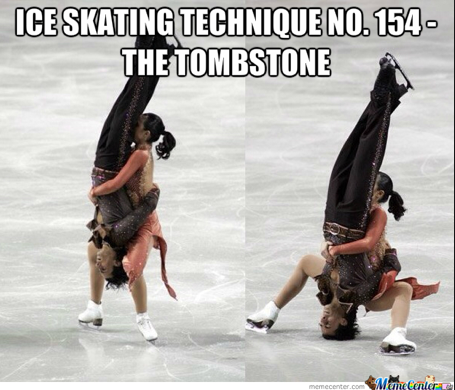
Um…OUCH!
Every time those skates leave the ice is dangerous, because one tiny mistake can ruin the magic. When we decide to shift time (jump), our literary skates are leaving the ice, so execution becomes paramount to keep the performance seamless.
Also, what new skater is doing a routine filled with ten quadruple Lutz jumps? Probably won’t find many Olympians doing that either ;) .
Now you see why I want you to use jumps sparingly. Also, if we are going to jump, we better know how to execute it lest we destroy a knee our story. Jumps are also blended into a fabric of a larger performance and serve the whole or we would be left with ice-jumping as a sport.
To continue with our ice skating analogy, all jumps are jumps, but they each are different types of jump and each has a varying degree of difficulty worth a corresponding amount of points. A Salchow Jump and a Flip-Jump are both jumps, but with very different execution. Within each category of jump, there are differences as well. A single-axel jump is obviously different from a quadruple-axel jump.
The same idea applies to “flashbacks.” Yes, broadly speaking, all “going back in time” is a flashback. But there are different ways of going back in time. And, within each “way” of going back in time, there is a corresponding level of difficulty (and possible payoff).
Also, some of you may have more than one time-line and more than one “protagonist” and that can and has been done, but remember that jumps now reach a new height of difficulty. Because we are balancing partners, timing must be perfect and if one partner stumbles, it brings down everyone.
Before we talk about time as a device…
The Training Wheel Flashback
The training-wheel flashbacks are the ones we should learn to nix right away. It is weak writing. This type of flashback does what training wheels do. They artificially “prop” up the weak plot and weak characterization.
Most of us start with training wheels. It is OKAY to be new. But eventually, we look rather silly.
When I wrote my first “novel”, I had two protagonists with parallel plots. Okay. More than a tad difficult for a first-timer, but all righty. But THEN, I kept feeling the need to go back and explain. How did they become friends? How did the one character develop such bad OCD she became agoraphobic? Etc.
Thing is, I had no plot. But, even if I did have a plot, these were elements I didn’t need to go back in time and explain. They were friends. I am Author God and if I say they are friends, the reader accepts that.
The one character was OCD. That was all I needed. She was just OCD. That’s all. There was nothing in those flashbacks that couldn’t have been related current-time in narrative or dialogue. I didn’t need to hop in a Literary DeLorean and explain by detailing her abusive childhood.
In fact, had I not explained why she was OCD and agoraphobic, I might have maintained/increased tension because the reader would have hoped I might reveal WHY.
Flipping back and forth in time added way too many characters, places and problems that had nothing to do with the current story problem in need of resolution.
When I took hostages asked friends and family to read my novel, the largest complaint was I confused everyone. They had no clue what my story was about (namely because I didn’t know either). I’d strung together a bunch of beautifully written vignettes all across time, propped up with training wheels flashbacks.
Ah, but pretty prose does not a story make.
Yes, flashbacks are a real literary device. I will add a caveat that deus ex machina is also legitimate literary device that was used by the great Greek writers. Today? Readers would rightfully toss our book across the room, because deus ex machina is viewed as a cheap trick to get out of a plot problem where we the writer have painted ourselves in a corner. So, just because something is a real literary device doesn’t mean it will work in modern commercial fiction.
But, YES, shifting in time is something that can be and is done. It might be a parallel timeline (Fried Green Tomatoes, The Notebook, True Detective).
It can be non-linear structure (Memento, Vanilla Skies).
It can even be a true flashback that is critical to the current story problem. For instance, an event that happened earlier that directly relates to solving/conquering the real-time story problem that won’t work in a prologue.
We’ll explore all of these and ways they’ve been done well.
But, before we talk about bending time, let’s look at the inherent pitfalls to time travel (even when we do it well).
Bending Time

Back to the future, then past then future…
There are a lot of ways to bend time. But, like the quadruple axel, there are risks. Bending time is part of our author toolbox. There is nothing saying all stories MUST go from Point A to Point B in a linear, chronological fashion.
This said, we need to be careful how much we bend time and why we are bending time. Remember that every time we shift time, we can lose members of our audience. Yes, a handful of film geeks loved Memento.
But, Memento is one of those movies that can probably only be done ONCE.
Pulp Fiction did a fabulous job of hopping all over time, but just as many people who loved the movie hated the movie and couldn’t finish. Same with The English Patient and The Hours.

From the Oscar Award Winning Film, “The Hours”
We have to remember that, ultimately, stories are for the audience not for us (unless we are happy selling a book to ourselves). What experience are we giving them? Are we killing our tension and momentum because we keep jerking the reader back into a past that has no purpose other than exposition?
One of the reasons I play the Flashback Dictator, is that if I pull the training wheels away and help you learn to NOT rely on them, your writing will improve. THEN, if you do decide you must shift in time, you will be careful to do it with intention and will execute it WELL.
Instead of wobbling all over, any time shift has purpose.
A good litmus? The PAST must be related to what is going on in the PRESENT and directly impact the FUTURE (how the story is resolved).
Some questions we might ask when tempted to go back in time.
Is this something that can be explained real-time?
For instance, in the series True Detective (which we will use later), the story follows two detectives who do NOT get along. The more amiable detective is trying to get to know his tortured and gloomy partner.
Detective Marty Hart: Your mom alive?
Detective Rust Cohle: Maybe.
Just this line of dialogue speaks VOLUMES. Of course later, Cohle explains in a few lines of dialogue that his father returned from fighting in Vietnam when he was two. Mom couldn’t take it and left and he hadn’t seen her since. We didn’t need to go BACK there because Cohle’s family problems, him being abandoned as a toddler and resulting relationship with his dad, has nothing to do with the current PLOT problem…finding a brutal killer.
If I cut the flashback, does it really harm the story?
If you have beta readers, critique partners or an editor, try removing any scenes that “go back” and often they aren’t as critical as we believe. Maybe one or two we need to keep, but I guarantee most can be weeded out (unless this is non-linear plotting).
Have I started in the wrong spot? Am I telling the “right” story?
Sometimes when we get writing, our subconscious knows that the more interesting story actually happened earlier, which is why we keep going back. Often, changing WHEN the story begins helps.
Have I unintentionally smooshed TWO separate stories together?
IF we keep flipping back and forth, we might also be muddying two separate stories together. It might be we need to separate the timelines and give each story a separate stage.
Remember, the PAST must be related to what is going on in the PRESENT and directly impact the FUTURE (how the story is resolved). From Pulp Fiction to The English Patient to The Hours past and present are tethered and eventually the timelines converge and empty into the same gulf.
If we look and realize one timeline is going one way and another is going a different way and end in different places? A good time to cut in half and have two books ;) .
I hope this helps you guys understand the difference between the “bad” flashback and simply using time as a literary device. We will explore the ways we can bend time some more and I will work to give you tips for how to land that quadruple-axel without taking out a small village.
What are your thoughts? Do you struggle with movies or novels that bounce all over time? Have you struggled with shifting in time and maybe you were telling the wrong story or beginning in the wrong spot? Have any questions?
Classes:
Before we go, y’all asked for it so here goes. I have two classes coming up. The class on log-lines Your Story in a Sentence—Crafting Your Log-Line is $35 and as a BONUS, the first ten sign-ups get to be victims. IF YOU ARE QUERYING AN AGENT, YOU NEED A PITCH. I will pull apart and torture your log-line until it is agent-ready for FREE.
Beyond the first ten folks? We will work out something super affordable as a bonus for being in the class so don’t fret. I’ll take good care of you. AND, it is two hours and on a Saturday (June 27th) and recorded so no excuses :P .
I am also running Hooking the Reader–Your First Five Pages. Class is on June 30th so let’s make Tuesdays interesting. General Admission is $40 and Gold Level is $55 but with Gold Level, you get the class, the recording and I look at your first five and give detailed edit.
Our first five pages are essential for trying to attract an agent or even selling BOOKS. Readers give us a page…maybe five. Can we hook them enough to part with cold hard CASH? Also, I can generally tell all bad habits in 5 pages so probably can save you a ton in content edit.
I LOVE hearing from you!
To prove it and show my love, for the month of JUNE, everyone who leaves a comment I will put your name in a hat. If you comment and link back to my blog on your blog, you get your name in the hat twice. What do you win? The unvarnished truth from yours truly. I will pick a winner once a month and it will be a critique of the first 20 pages of your novel, or your query letter, or your synopsis (5 pages or less).
Remember, for MORE chances to win and better ODDS, also comment over at Dojo Diva. I am blogging for my home dojo and it will help the blog gain traction.
For those who need help building a platform and keeping it SIMPLE, pick up a copy of my latest social media/branding book Rise of the Machines—Human Authors in a Digital World on AMAZON, iBooks, or Nook.


June 12, 2015
Why Flashbacks Ruin Fiction

Image via Flickr Creative Commons, courtesy of Sally Jean
We have been discussing Deep POV, and yesterday I mentioned hating flashbacks with the power of a thousand suns and promised to explain why next post.
Yay! Here we are.
So you want to be a writer. Okay. I’ll be blunt because that’s my superpower. Check your conscience at the door keyboard. Writers are not civilized humans. In fact, we are the opposite. We are the reptilian brain to the power of a million. We probe and prod and poke the weak places.
Great storytellers are nothing short of sadists. We take a perfectly empathetic/likable person, toss their life in a Vita-Mix and blend, churning that mixture from Level 1-1000.
That is called conflict.
Stories are about people with problems to be solved. Everything else is a travel brochure.
One of the reasons I LOVE teaching craft is I get to see the work/stories of other writers. Last time I held my First Five Pages class (which there is a NEW ONE open *wink, wink*), I could hear the collective groans when I said, “NO FLASHBACKS. EVER.”
But, I am a benevolent dictator and instructed those submitting pages, that if they believed they positively-absolutely-must-have the flashback and had no idea how to extract it? Send it anyway.
One of my students sent her pages and they were the best example I have seen about WHY I hate flashbacks. Fabulous story and the flashbacks absolutely killed it.
***And, so you know the student was cool with me using this example and later fixed the story per my suggestions and it was successfully published.
:D
HOOK
We’ve talked before about how to hook readers. It doesn’t have to be a bomb, a car chase, a murder. In fact, some of the best tension is in the everyday and it is even more intense because regular people can relate. Most of us can’t relate to a bomb ticking down but two words—Family Reunion. One word—WEDDING.
This writer’s story began with a poor wedding planner trying to herd badly hungover bridesmaids to a wedding (in Mexico). She is trying to repair dresses, cater to a prima donna maid of honor, and placate a bride who is passive and used to others walking over her.
Between trying to get enough outlets in a hundred-year-old church, bridesmaids barfing on their shoes, and a meddling mother of the bride, we have the perfect STEW of DRAMA and a FANTASTIC HOOK! Perfect understanding of in medias res.
We feel compassion for the poor wedding planner and worry if she will get these sick-half-drunk girls to the wedding without using a stun-gun on someone.
I was RIVETED…and then the author went back and explained how the wedding came to be held in Mexico.
ER????
NO, I WANT TO SEE A BRIDESMAID PUKE IN THE FLOWER ARRANGEMENTS!
This sample of writing was fantastic, but she did two things that undermined her piece.
NOTHING Should Work

Image via Flickr Creative Commons, courtesy of Juha-Matti Herrala.
When the wedding planner gives the bridesmaids Pepto, it makes them feel better. Okay, I will go with that. But to enhance this? It makes them feel better…moments before at least one of them (or ALL of them) barfs pink all over the wedding planner’s bag, or the bride’s veil, or the bouquet. Now, the problem isn’t only the sickly maids and bride, but how the heck can the wedding planner get out of THIS?
Character is demonstrated by solving (or not solving) problems REAL-TIME. We do not need to go back in time to explain or tell what kind of person the protagonist is. She didn’t need to go back and tell me about the protagonist’s character when she could easily show me in the current timeline.
Since wedding planner is the protagonist, maybe she has been through this before and just as the bride is about to have a breakdown because her veil is ruined? Wedding planner pulls out…a spare.
She always orders two after that wedding she put together in Oklahoma where the chain-smoking bride set fire to her own veil (showing she is calm and resourceful).
Whatever.
So when you put your characters in any scenario, ask, “Can I make it WORSE?” Then make it worse. Then ask that question again and again until you can’t make it worse without making it weird (I.e. sudden alien abduction in a Women’s Fiction).
Part of becoming a writer is to train out any human sensitivity. When we make life easier on our characters, we are doing it because WE feel tension and are seeking to alleviate that. Ah, but TENSION is the fuel of fiction, so do the opposite of what civilized humans would do and MAKE IT WORSE.
Flashback Fizzle
I could tell this writer was doing a SUPERB job of winding our nerves tighter than a Hollywood facelift. How? She backed off to explain…using a flashback.
When we feel the need to use a flashback and go back in time? Often we are reacting to tension we’ve successfully created and now y’all might see why I feel flashbacks are bad juju. Fiction is all about conflict. No conflict no story. No tension? Good place to stop reading.
How many of you have jerk friends, family or acquaintances? Or all of the above? Or maybe you’ve had a moment where you’ve shown your butt? I have all of the above. What do we do to ease others? To make them relax?
We explain.
Sorry about my Mom. She’s not been the same since my father died.
Ok, so we leave out the part that Dad died 15 years ago. It works. It makes others give grace to Mom for acting like a horse’s behind.
I apologize for blowing up like that. I had a flat tire, migraine, no sleep, allergy medicine overdose, etc.
EXPLAINING is what civilized humans do to break the tension. STOP IT! CUT! CUT! CUT!

Original image via Flickr Commons courtesy of Mark Coggins
All of us will feel a NEED to explain why a character is moody, angry, broken, bawdy, whatever. DON’T. Resist the urge to EXPLAIN. In fact, if readers don’t know WHY, they will want to turn pages to find out WHY.
Frankly, as writers, we are GOD, so we really don’t have to explain ourselves anyway. Let the readers suffer until the very end, when you finally allow resolution. Suffering is good for readers (and book sales).
***And, like anything, I am sure someone somewhere used a flashback and it was AWESOME. Like any writing “rule” we can break this one, too. But, we have to know the rules to break the rules ;) .***
Flashback Fodder in Real-Time Adds Mystery
When this writer flashed back to explain how the wedding ended up in Mexico instead of Mom’s choice (Napa Valley), she inadvertently missed two opportunities:
1) Increase tension.
2) Show character.
If she’d had this flashback information revealed real-time, Mom could have come in, seen the sea foam green bridesmaids (faces and dresses matching) and thrown a fit. “THIS is why I wanted to have this in Napa. It’s Montezuma’s Revenge. I told you wine country was a better choice. Why don’t you ever listen to me?”
The poor bride, who never stands up for herself is defeated and losing ground on what should be HER day. Wedding planner can come to the rescue and usher Mom out with the skill of an ambassador in a war zone (or try and fail). Either way, we LIKE her for trying.
THIS is “Show don’t tell.” Having critical information from a flashback in the current thread of time allows readers to see people act and react. It makes us wonder. It makes us tense. We want to ease the pressure and the only way to do that is to KEEP READING and HOPE it will eventually all turns out for the better.
Most Backstory CAN Be Told Real-Time…I Promise
One major reason new writers rely on flashbacks (aside from a possibly weak/flawed/nonexistent plot OR as a tension release) is that there is something that happened earlier the writer wants to share. Backstory.
A lot of writers don’t give readers enough credit. We believe we need to travel back in time to explain the backstory or the reader won’t “get” what’s going on. They will.
Let’s take a quick look at one of yesterday’s hastily assembled examples of Deep POV.
Fifi clutched the baby picture, the one her daughter had given her a week ago for Mother’s Day when they picked her up from rehab. Ninety days clean. At least that was the lie she’d packed along with her swimsuit and the hairspray can with the secret compartment and the only pills they hadn’t found.
The pills that were now gone.
They should have already been at the resort, the one staffed with eager friends willing to help her out. Friends with first names only who took cash and asked no questions.
Fifi scratched at her arms. Millions of insects boiled beneath her skin, invaded her nerve endings and chewed them to bleeding bits. Pain like lightning struck her spine, the section crushed then reconstructed. Pain like lightning spidered her brain, frying her thoughts. She glanced again at the baby picture, then at the fine young woman in back. Her daughter Gretchen.
What am I doing?
Maybe she would be okay. Maybe she hadn’t had enough pills to completely undo her. Maybe she could ride this out. And maybe I’m the Queen of England.
Gretchen bent between the seats and kissed her on the cheek. “I love you, Mom. You okay?”
Tears clotted her throat. She nodded. “Yes, I’m fine, Honey.”
“You mean it?”
She hesitated then smiled. “Yes. Yes I do.”
She tucked the baby picture in her shirt pocket, close to her heart and opened the van door. She needed air. She also needed to change their plans. Visit somewhere with no friends. With no one who took cash.
Look at ALL the stuff we learn without having to go back in time. We learn the time of year. That Mother’s Day was a week ago. That the family picked up Fifi from rehab. We learn she has an addiction to pills that is bad enough she has special drug-hiding containers. We later realize she has suffered a serious injury that crushed part of her spine.
You guys get the idea. We don’t need to go back to her being picked up from rehab. We don’t need to go back to the car accident or the fall or the ambush by ninjas wielding large sticks to see HOW Fifi was hurt. None of that is salient to the current story problem aside from fleshing out the character.
In fact, if I have my addict stranded with a broken down car and STOP and rewind to explain how she injured her back? Odds are it would just confuse you.
The story is about a family breaking down on the way to a vacation destination. Taking side trips back in time is distracting, redundant, confusing and makes the conflict fizzle.
Now y’all know why I take away your flashbacks. I am being mean, but it’s good for you. Flashbacks will ease your nerves, but is it worth losing the reader? And we often don’t recognize we are doing this. Even I have to go back through my writing and hunt for places I backed off the throttle because I was uncomfortable.
We will talk more about flashbacks in the coming posts because, as I mentioned yesterday, often what folks believe is a flashback is actually unorthodox plotting (I.e. parallel timelines).
What are your thoughts? What makes you tense? Do you find you fall in love with your characters and go too easy on them?
Before we go, y’all asked for it so here goes. I have two classes coming up. The class on log-lines Your Story in a Sentence—Crafting Your Log-Line is $35 and as a BONUS, the first ten sign-ups get to be victims. IF YOU ARE QUERYING AN AGENT, YOU NEED A PITCH. I will pull apart and torture your log-line until it is agent-ready for FREE.
Beyond the first ten folks? We will work out something super affordable as a bonus for being in the class so don’t fret. I’ll take good care of you. AND, it is two hours and on a Saturday (June 27th) and recorded so no excuses :P .
I am also running Hooking the Reader–Your First Five Pages. Class is on June 30th so let’s make Tuesdays interesting. General Admission is $40 and Gold Level is $55 but with Gold Level, you get the class, the recording and I look at your first five and give detailed edit.
Our first five pages are essential for trying to attract an agent or even selling BOOKS. Readers give us a page…maybe five. Can we hook them enough to part with cold hard CASH? Also, I can generally tell all bad habits in 5 pages so probably can save you a ton in content edit.
I LOVE hearing from you!
To prove it and show my love, for the month of JUNE, everyone who leaves a comment I will put your name in a hat. If you comment and link back to my blog on your blog, you get your name in the hat twice. What do you win? The unvarnished truth from yours truly. I will pick a winner once a month and it will be a critique of the first 20 pages of your novel, or your query letter, or your synopsis (5 pages or less).
Remember, for MORE chances to win and better ODDS, also comment over at Dojo Diva. I am blogging for my home dojo and it will help the blog gain traction.
For those who need help building a platform and keeping it SIMPLE, pick up a copy of my latest social media/branding book Rise of the Machines—Human Authors in a Digital World on AMAZON, iBooks, or Nook.


June 11, 2015
Deep P.O.V. Part Two—Crawling Inside Your Characters

This GORGEOUS image via Flickr Creative Commons, courtesy of Aimannesse Photography
Last time we talked about the history and evolution of POV (Point of View) and why certain types of POV might not be the best choice for a modern reader. We also talked about what is often called “deep POV” which, until I looked it up one day? I thought was just tight writing. Who knew it had a name?
Today we’re going to dive deeper into deep POV.
Wow, deep.
Yes, there are style changes we can make, like removing as many tags as we can and ditching extraneous sensing and thinking words. But deep POV is strongly tethered to characterization. Good characterization. Before we get to that, let’s talk about what we often do when we’re new.
The Fishy Flashback
When we’re new writers, we often don’t understand plotting. We don’t yet have the skill set to structure a work spanning anywhere from 60,000 to 110,000 words (depending on genre). This is NOT a criticism. Yes, I had to write stories and essays, but the longest thing I ever wrote was 32 pages. And that was a term paper and not fiction.
Yet, I was dumb enough to believe that because I made As in English, that clearly I was NYTBSA material. Pshaw! I knew how to write *rolls eyes*.
Um, no. NO.
And if you won’t cop to this I will because I have no pride. New writers often get an image, a scene, a snatch of dialogue and then GO. Often the first hundred pages of a first-time novel is almost all flashbacks. Going back in TIME to know whyyyyyy. Why is this character the way he/she IS? What happened in childhood, young adulthood, that random college party back in ’03?
It’s also where we get brilliant ideas like journals and letters and coming to grips with “the past.”
Just so y’all know, no one cares about the past unless it impacts the future. Not in fiction and, bluntly, not in life. The past has already happened. In real life, we have to pay people by the hour to care about our past. They’re called psychiatrists.
Thus, the past (in a vacuum) is not interesting fiction. By definition, it has already happened. There is no pressing danger and so it becomes, as the famous late Blake Snyder would say, “Watch out for that iceberg! It is moving at an inch a year, but watch out!”
Flashbacks are a BIG sign of weak writing. And, since this is NOT a blog about why most editors want to stab flashbacks in the face…we’ll go over that next time :D.
****And don’t argue in the comments that Such-And-Such uses loads of flashbacks and now is taking baths in diamonds and crisp Benjamins. Anything CAN be done and often what y’all might think is a flashback is actually an unorthodox plotting structure. Same with use of journals and letters. So hold the torches and pitchforks until next time. I love you *SMOOCH*
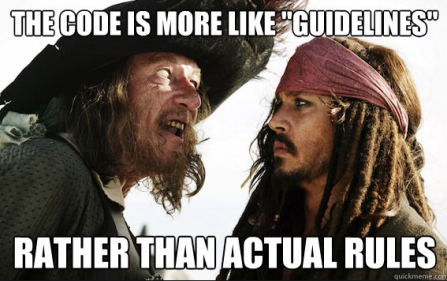
Pirate Code=Writing Rules. Clearer now? :)
Anyway…
A lot of new writers go about a hundred pages with no clear story, a crap-ton of flashbacks and thus create what is called the “fish head.” Unless you are my weird Scandinavian family, what do we do with fish heads? We cut them off and throw away. We DO NOT INGEST THEM.
The fish head is not necessarily “bad”, it just doesn’t belong in the novel and good editors will cut it. Often the fish head is the writer getting to know the cast, which is actually VERY important, lest we have a book of talking heads who all sound like the author.
It is essential to know our cast if we hope to successfully write “Deep POV.”
KNOW Your Cast
There are all kinds of ways to get to know our characters. I often write detailed character backgrounds before starting a story so it doesn’t become a fish head.
Why we need to know our characters is that deep POV is a reflection of the inner self, how that character sees the world, responds, evades, processes, etc. It is also a reflection of personal history and relationship dynamics.
*cue brain cramp* *hands paper bag*
It’s okay. Breathe. We’re going to unpack this.
Reflection of the Character

Image via Flickr Creative Commons. Bansky’s “Peaceful hearts Doctor” courtesy of Eva Blue.
Back when I used to run a weekly workshop, I had writers do a little exercise to help them learn POV and also strengthen character-building skills. I gave this scenario:
We have a family of four—Mom, Dad, a grandparent (either gender) and a teen (either gender) who has spent a year saving for a family vacation. On the way to their destination, the vehicle breaks down. What happens and tell it from the perspective of EACH family member.
Every week, writers showed with the perspective of one of the four. We had ASTONISHING creativity. Some families were aliens on an interstellar vacation. Some had wandered into cartel territory. One family went back in time. But no matter where the story was set, the characters were recognizable in their roles. The perspective of a grandparent was markedly different than the teen.
The language was unique, the dialogue and what that character might notice or feel. What was upsetting?
While a mother might be thrilled to have the family together for a vacation, the teen might be sulking in the back upset that there is no wi-fi. The mom might be worried they will have to go home while the teen is happy because she doesn’t want to be trapped in a car with “old people.”
Who These Characters ARE Changes the Story AND Deep POV
When we layer in some background, the characters (and consequently the story, problems and conflict) all change drastically.
What if dad is finally home from his forth tour in Afghanistan and has terrible PTSD?
What if Mom is a closet alcoholic?
What if the teen is recently in remission from Leukemia?
What if Grandma is a tireless flirt who dresses in short skirts and hits on every man in a ten-mile radius?
What if the teen is an asthmatic and forgot his inhaler?
What if Granddad has early on-set Alzheimer’s?
What if the teen has been recruited for a mandatory deep space mission by the New Earth government and will never see the family again?
What if the teen was adopted and the purpose for the trip was to meet the child’s birth mother? How would this impact the emotions of those in the vehicle?
What if there used to be TWO children and one had died in an accident a year previously?
Do you see how by changing WHO these people are, this cannot HELP but affect everything else?
If Dad has PTSD, he might jump at every lump of roadkill because that’s how insurgents hide IEDs. If the family is stranded and Mom can’t get to a liquor stash, she might start getting belligerent or, left too long, start going through DTs. What would an addict notice? Likely nothing beyond how to get a fix.
While a kid in remission with a new lease on life might enjoy being broken down in the middle of nowhere (appreciating the little things in life) the addict would be hysterical.
All of this will impact Deep POV because we are in the HEAD and EMOTIONS of the character.
Let’s pick on Mom for an illustration. I’m riffing this, so the writing is just an illustration. Just roll with it.
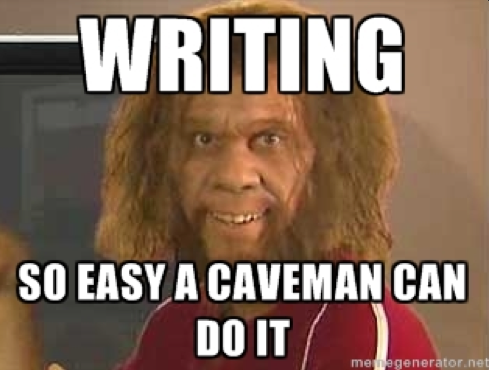
Geiko Caveman.
Kidding! Lighten up. You seem tense.
Example One:
Fifi clutched the baby picture, the one she’d carried everywhere for fifteen years. She hated she was happy the old van had finally given out. Her husband stared, bewildered at the smoking engine. Other than car trouble, he seemed fine. Fine. How can he be fine?
She glanced back at her daughter, the living reflection her of all her dreams and failures. She’d wanted a baby more than life. Every night on a freezing floor. One miscarriage after another and then came a tiny bundle of everything she’d ever longed for.
That woman hadn’t wanted her. That woman had abandoned her. That woman was Gretchen’s real mother and now Gretchen wanted to meet her. Real mother, like hell. And I’m a real astronaut.
How had she failed? If she’d been a good mother, Gretchen would have forgotten that woman and they wouldn’t be here.
“You okay?” Her daughter bent between the seats and kissed her cheek. “You said this was okay, that we could do this. You’re sure, right?” A wary smile revealed new braces, the braces Fifi paid for with money she’d saved for a new van.
“I’m fine, Honey.” She crumpled the baby picture and opened the van door. She needed air.
***
Example Two:
Fifi clutched the baby picture, the one her daughter had given her a week ago for Mother’s Day when they picked her up from rehab. Ninety days clean. At least that was the lie she’d packed along with her swimsuit and the hairspray can with the secret compartment and the only pills they hadn’t found.
The pills that were now gone.
They should have already been at the resort, the one staffed with eager friends willing to help her out. Friends with first names only who took cash and asked no questions.
Fifi scratched at her arms. Millions of insects boiled beneath her skin, invaded her nerve endings and chewed them to bleeding bits. Pain like lightning struck her spine, the section crushed then reconstructed. Pain like lightning spidered her brain, frying her thoughts. She glanced again at the baby picture, then at the fine young woman in back. Her daughter Gretchen.
What am I doing?
Maybe she would be okay. Maybe she hadn’t had enough pills to completely undo her. Maybe she could ride this out. And maybe I’m the Queen of England.
Gretchen bent between the seats and kissed her on the cheek. “I love you, Mom. You okay?”
Tears clotted her throat. She nodded. “Yes, I’m fine, Honey.”
“You mean it?”
She hesitated then smiled. “Yes. Yes I do.”
She tucked the baby picture in her shirt pocket, close to her heart and opened the van door. She needed air. She also needed to change their plans. Visit somewhere with no friends. With no one who took cash.
Do you see how changing WHO Fifi is changes everything? Everything she is sensing, feeling, thinking. Being in the emotions of a heartbroken mother who feels betrayed is a very different experience from being in the head of a sympathetic addict who’s struggling to get clean and stay clean.
***
Both women are impacted by the daughter. One Fifi is hurt by the daughter, the other Fifi finds hope in the daughter. Both women are conflicted. One is tormented with feelings of failure and betrayal and the other is tormented by failure, but very real physical problems of addiction that impact the story.
Deep POV has thrust us into the head and emotions of both women. We feel what they feel. The author is invisible because there are no tags. The sensations are raw and visceral because we have gotten rid of the coaching words.
Instead of:
Fifi felt millions of insects boiling beneath her skin….
We get right to it.
Millions of insects boiled beneath her skin…
The sensation is CLOSER. There is no psychic distance. She isn’t thinking she is going to lose it. She isn’t wondering if she can keep it together. She is experiencing everything real-time and up-close.
Instead of:
Fifi thought, What am I doing?
She just does. We KNOW Fifi is thinking because we are camped in her head.
Deep POV is Akin To Method Acting
When we know our characters, who they are, how they came to be, the formative experiences, we can then crawl in that skin and become that person. By us becoming that character, we then have the power to transport our reader into the skins we have fashioned.
I hope this helps you guys understand the magical, mystical Deep POV and now you’re all excited about writing stronger characters.
Before we go, y’all asked for it so here goes. I have two classes coming up. The class on log-lines Your Story in a Sentence—Crafting Your Log-Line is $35 and as a BONUS, the first ten sign-ups get to be victims. IF YOU ARE QUERYING AN AGENT, YOU NEED A PITCH. I will pull apart and torture your log-line until it is agent-ready for FREE.
Beyond the first ten folks? We will work out something super affordable as a bonus for being in the class so don’t fret. I’ll take good care of you. AND, it is two hours and on a Saturday (June 27th) and recorded so no excuses :P .
I am also running Hooking the Reader–Your First Five Pages. Class is on June 30th so let’s make Tuesdays interesting. General Admission is $40 and Gold Level is $55 but with Gold Level, you get the class, the recording and I look at your first five and give detailed edit.
Our first five pages are essential for trying to attract an agent or even selling BOOKS. Readers give us a page…maybe five. Can we hook them enough to part with cold hard CASH? Also, I can generally tell all bad habits in 5 pages so probably can save you a ton in content edit.
I LOVE hearing from you!
To prove it and show my love, for the month of JUNE, everyone who leaves a comment I will put your name in a hat. If you comment and link back to my blog on your blog, you get your name in the hat twice. What do you win? The unvarnished truth from yours truly. I will pick a winner once a month and it will be a critique of the first 20 pages of your novel, or your query letter, or your synopsis (5 pages or less).
Remember, for MORE chances to win and better ODDS, also comment over at Dojo Diva. I am blogging for my home dojo and it will help the blog gain traction.
Winner for May is Ugirid Haprasad and the Dojo Diva winner is Amy Kennedy. Please send 20 pages (5000 words) in a WORD document to kristen at wana intl.com. Congratulations!
For those who need help building a platform and keeping it SIMPLE, pick up a copy of my latest social media/branding book Rise of the Machines—Human Authors in a Digital World on AMAZON, iBooks, or Nook.


June 9, 2015
Deep P.O.V. Part One—What IS It? How Do We DO It?

Image via Flickr Creative Commons, courtesy of FromSandToGlass
Writing is like anything else. The trends and fashions change along with the audience. For instance, Moby Dick spends an excruciatingly long time talking about whales, namely because the audience of the time probably had never seen one and never would. If we did this today? Sure, feel free to walk around in a literary gold-plated cod piece, but er…
Yes, awkward.
Epics were also very popular. Follow a character from the womb until death. FANTASTIC STUFF! Why? Because no one had HBO, Pinterest or Angry Birds. Books were a rare indulgence usually reserved for a handful of literate folks with the money or connections to get their hands on…a book.
Also, since writers were paid by the word, their works were padded more than a freshman term paper. Their motto? No modifier left behind. These days? We have to write leaner, meaner, faster and cleaner.
Recently, we talked about POV and which one might be the best for your story. I can’t choose for any of you, but before we talk about deep POV, I want to mention that POV is also affected by audience and I believe is a direct reflection of how connected we are as a society.
You guys may or may not know that POV has changed along with communication and connectedness. Waaaaay back in the day, omniscient with a god-like narrator was all the rage. But people didn’t travel at all. Most humans lived and died in the place they were born and in isolation from other communities.
With the early epics, we often had a narrator who was separate from the events.
Dear Reader, come with me for a tale of AWESOME…
Later, after the Dark Ages, people got out more, traveled more, etc. We see the narrator merging into just general god-like presence. Then, after the printing press was invented, more and more people were reading and a lot of monks were out of a job and started the first microbreweries.
Don’t argue. It’s history :P .
With pamphlets and papers, people became more engaged and journalism eventually gives birth to this new-fangled invention…first-person. Third person and third-person shifting only became popular after audiences grew accustomed to radio programs (and later television) and could mentally process the idea of a cut-to scene.
As people became networked closer and closer, we see the psychic distance closing. Now that we are a culture of reality TV and social media? Omniscient is a tough sell. I am not telling any of you what POV to choose, but I will say that modern readers will shy away from these older forms of POV because they “feel cold.” Modern readers LOVE being as close as possible, ergo my little side-trip through history.
And this is where we get *drum roll* deep POV.
You hear this word flung around the writing world. Oooh, deep POV. That is deep POV. Deep, Man.
Um, what is deep POV?
And, if you are like me, you go along and are too embarrassed to ask what the heck deep POV is? Everyone wants it. Readers love it. Uh, but what IS it? How do I do it? Can I order some on-line?
Deep POV is simply a technique that strips the author voice completely out of the prose. There is no author intrusion so we are left only with the characters. The reader is nice and snuggly in the “head” of the character.
Okay, clear as mud. Right? Right.
As an editor, I see the intrusion much more than authors. It is actually shocking how much you guys interrupt. In fact, you are like my mother chaperoning my first date who would swear she was quiet as a mouse.
NOT.
I actually like deep POV because I love tight pose. I loathe unnecessary words. Deep POV not only leans up the writing, it digs deeper into the mental state of the character. We probably aren’t going to stay completely in deep POV, but it’s a nice place to call “home.”
How do we do it? Today, for the sake of brevity, we are just going to talk about simple stylistic changes, not the actual writing. We will do that next time ;) .
First, Ditch the Tags
Just using the word “said” tells the reader we (the author) are there.
Kristen’s Made-Up Example (don’t judge me, just roll with it)
“No, I always love it when you drop by,” she said. Fifi felt her hands start to shake. She glanced over Tom’s shoulder and saw that the street was deserted. She knew all of her neighbors had already gone out of town for Christmas and no one would hear her scream. She thought, He is going to kill me.
Okay, so we get that Fifi is in a bad spot. But just that little word said tells us the author is present. So in the next layer we are going to remove the said.
While We Are Here? Thought and Sense Words—Ditch Those, Too
If we really pause and think about it, thought and sense words are frequently redundant. If we are IN the character’s head? We KNOW she is thinking. Who else would be thinking?
We aren’t dumb. Yes, it is my personal opinion, but I feel sensing and thinking words often qualify as holding the reader’s brain. We don’t need to. Readers are pretty smart.
Let’s look at my made-up example.
“No, I always love it when you drop by.” Fifi felt her hands start to shake. She glanced over Tom’s shoulder and saw that the street was deserted. She knew all of her neighbors had already gone out of town for Christmas and no one would hear her scream. She thought, He is going to kill me.
So we ditched the said and that tightened it up. Did you notice how losing the tag tightened the psychic distance? Now let’s remove these stubborn stains unnecessary sensing and thinking words.
***Also, try to ditch any “starting to”. Do or do not, there is no try starting to.
“No, I always love it when you drop by.” Fifi’s hands shook. She glanced over Tom’s shoulder. The street was deserted. All of her neighbors had already gone out of town for Christmas and no one would hear her scream. He is going to kill me.
Do you see how just getting rid of those excess words upped the tension of this piece? We (the reader) go from being a distant observer to being in the potentially deadly situation. We don’t need to tell the reader Fifi is thinking or feeling or about to do something. The reader gets that and us putting in glowing directional arrows is a distraction.
Fifi felt Tom’s hands clamp around her throat.
Just get to it already!
Tom’s hands clamped around her throat.
So I hope this helps clear up some of your “deep POV” questions. Remember that we live in a culture that is spoiled with intimacy and we can give them what they love. Next time, we will discuss characterization and how to write in deep POV beyond the stylistic choices.
Before we go, y’all asked for it so here goes. I have two classes coming up. The class on log-lines Your Story in a Sentence—Crafting Your Log-Line is $35 and as a BONUS, the first ten sign-ups get to be victims. I will pull apart and torture your log-line until it is agent-ready for FREE. Beyond the first ten folks? We will work out something super affordable as a bonus for being in the class so don’t fret. AND, it is two hours and on a Saturday (June 27th) and recorded so no excuses :P .
I am also running Hooking the Reader–Your First Five Pages. Class is on June 30th so let’s make Tuesdays interesting. General Admission is $40 and Gold Level is $55 but with Gold Level, you get the class, the recording and I look at your first five and give detailed edit.
Our first five pages are essential for trying to attract an agent or even selling BOOKS. Readers give us a page…maybe five. Can we hook them enough to part with cold hard CASH? Also, I can generally tell all bad habits in 5 pages so probably can save you a ton in content edit.
I LOVE hearing from you!
To prove it and show my love, for the month of JUNE, everyone who leaves a comment I will put your name in a hat. If you comment and link back to my blog on your blog, you get your name in the hat twice. What do you win? The unvarnished truth from yours truly. I will pick a winner once a month and it will be a critique of the first 20 pages of your novel, or your query letter, or your synopsis (5 pages or less).
Remember, for MORE chances to win and better ODDS, also comment over at Dojo Diva. I am blogging for my home dojo and it will help the blog gain traction.
Winner for May is Ugirid Haprasad and the Dojo Diva winner is Amy Kennedy. Please send 20 pages (5000 words) in a WORD document to kristen at wana intl.com. Congratulations!
For those who need help building a platform and keeping it SIMPLE, pick up a copy of my latest social media/branding book Rise of the Machines—Human Authors in a Digital World on AMAZON, iBooks, or Nook.


June 5, 2015
You Might Be a Writer If…
A lot of “stuff” has been going on in my life lately. Hard stuff. Heavy stuff. The kind of stuff that just makes me want to write massacre scenes….except I am so brain dead I had to google how to spell “massacre.”
Masicker? Missucker?
WHAT AM I DOING???? *breaks down sobbing*
I am supposed to be an adult an expert okay, maybe functionally literate. Fine, I give up! I have nothing left to saaaaayyyyyy. I am all out of woooords *builds pillow fort*.
I figured it’s time for a bit of levity. Heck, I need a good laugh. How about you guys?
We writers are different *eye twitches* for sure, but the world would be SO boring without us. Am I the only person who watches Discovery ID and critiques the killers?
You are putting the body THERE? Do you just WANT to go to prison? Why did you STAB them? Helllooo? Blood spatter? LOO-Min-OL? Moron.
I think it’s a writer thing. So, since today I am staring at the “White Screen of I SUCK and Why Did I Want to Be a WRITER?”, we are just going to roll with it…
You Might Be a Writer If…
You’ve learned that regular people are cute, and no longer get offended with this conversation.
Regular Person: What do you do?
Writer: I’m a writer.
Regular Person: No, I mean, what’s your real job?
You’ve come to understand that writers are a lot like unicorns. Everyone knows about them, they’ve simply never seen a REAL ONE.
You Might Be a Writer If…
The NSA, CIA and FBI no longer bother with you. Likely, they know you by name and now outsource to the creepy ice cream truck to just make a few passes and check to make sure you’re still at your computer.
As an extra bonus, the next time the NSA passes by in the panel van? Go out and ask them for a job application and maybe even a reference if you want bonus smart@$$ points.
You Might Be a Writer If…
You are regularly mistaken for a homeless person because you haven’t bathed or changed clothes in ages and are wandering around shouting at the air.
…aaaand, you are just in revisions.
You Might Be a Writer If…
You hate texting because it takes too long to use proper spelling, grammar and punctuation.
You Might Be a Writer If…
You know what’s the best time of year to dispose of a body to confuse TOD and that seriously creeps out your friends and family.
And you know what TOD stands for and that creeps them out even more.
You Might Be a Writer If…
You’re on such a roll with the WIP that you’ve forgotten a “real” world exists (including laundry). You’re down to wearing your husband’s socks and he’s either going commando or is forced to wear that thong given to him on his 40th birthday as a joke gift. The kids? Hell, they went feral a week ago.
You Might Be a Writer If…
You take a break from writing to go to the store and, on the way, begin untangling a plot problem. You finally realize you’re in the next state and have no idea how you got there. But good news is, you now know which poison is best to kill off the character modeled after that cheerleader who bullied you through high school. It’s the poison that will make her fat and wrinkly before she dies slowly from terminal acne.
You Might Be a Writer If…
You have NO CLUE what to do in case of a flood, a fire or a natural disaster, but you are actually looking forward to the collapse of civilization because you are pretty sure you will make an AWESOME Warlord.
You Might Be a Writer If…
You appreciate that if Febreeze is good enough for the couch, why not hose the kids? Hey, you spent extra for the anti-microbial one. It kills germs *rolls eyes*. Now your tot smells like a Hawaiian Breeze and his cooties can’t hurt others. You should get a freaking MEDAL for this kind of creativity.
You Might Be a Writer If…
You’ve been diagnosed with Tourette’s, Multiple-Personality Disorder or both. It’s tough to explain you were simply working out dialogue when strapped to a gurney. But the upside is when they sedate you, it’s the only vacation you’ve had in months and insurance might even cover it. SCORE!
You Might Be a Writer If…
People believe you are a shy introvert, but you just can’t bring yourself to tell them that your imaginary friends are simply WAY more interesting.
You Might Be a Writer If…
A casket washes up in a Houston flood and while normal people are upset how tragic it is, you are wondering if there is GOLD inside. Or missing drug money.
Or if they open open it, could they unwittingly unleash the ZOMBIE PLAGUE?
Or what if it is the WRONG BODY? And it was all to cover up a mob leader faking his own DEATH?
You Might Be a Writer If…
You realize you are a horrible human being for getting so excited for that last one because NOW YOU HAVE A NEW STORY IDEA YOU SICK, SICK SOULLESS PERSON!
You Might Be a Writer If…
“Recycling” is using the same jerks from real life in a new story. We can kill them AGAIN! :D
You Might Be a Writer If…
You’re no longer invited to family events because they can’t take the incessant correction of their grammar.
Chickens are done, people are FINISHED.
You Might Be a Writer If…
You’re automatically safe from any episode of Hoarders because when you get enough books? Others naturally assume you’re a LIBRARY. Hey, maybe you can apply for government funding. Scratch that. Then, you’d have to let people borrow your books.
You Might Be a Writer If …
You willingly suffer frostbite hiding in a Costco freezer eavesdropping a couple’s fight, because dialogue that epic is worth a losing pinkie toe. Your coffee table’s already tried to assassinate it 342 times anyway.
You Might Be a Writer If…
You’ve been mistaken for Gollum multiple times, because strangers found you in a dark corner whispering “My precious….” and it was just you and your Kindle.
You Might Be a Writer If…
You plow over the entire Kardashian family, because OMG there’s Stephen KING!
You Might Be a Writer If…
Your idea of fun is reading the Diagnostic and Statistical Manual of Mental Disorders, talking to your friends at the Coroner’s office or reading/writing Amazon reviews of the Bic Pen for Her or the Hutzler 571 Banana Slicer.
You Might Be a Writer If…
Speaking of the Hutzler 571 Banana Slicer, you actually bought one, not only to support the greatest comedic writing in human history, but also to screw with the TSA. Can you get it through airport security without a full-body search? Hide it near your shoulders and FREE NECK MASSAGE!
You Might Be a Writer If…
You’ve made it onto the Mormon and Jehova’s Witness DO NOT CALL LIST because you will only promise to convert with purchase of YOUR BOOKS (and favorable 5-star reviews).
You Might Be a Writer If…
Every time some overblown Third World dictator threatens to destabilize the world, all you can think is, “Pfft. Amateur.”
Have any to add? I know you do. So, “You Might Be a Writer If….”
I LOVE hearing from you!
To prove it and show my love, for the month of JUNE, everyone who leaves a comment I will put your name in a hat. If you comment and link back to my blog on your blog, you get your name in the hat twice. What do you win? The unvarnished truth from yours truly. I will pick a winner once a month and it will be a critique of the first 20 pages of your novel, or your query letter, or your synopsis (5 pages or less).
Remember, for MORE chances to win and better ODDS, also comment over at Dojo Diva. I am blogging for my home dojo and it will help the blog gain traction.
Winner for May is Ugirid Haprasad and the Dojo Diva winner is Amy Kennedy. Please send 20 pages (5000 words) in a WORD document to kristen at wana intl.com. Congratulations!
For those who need help building a platform and keeping it SIMPLE, pick up a copy of my latest social media/branding book Rise of the Machines—Human Authors in a Digital World on AMAZON, iBooks, or Nook.


June 3, 2015
Brave New Bullying—How to Protect Yourself from Cyberbullying
I’ve talked before about how I train in Brazilian Jiu Jitsu. Recently, I have started assisting with teaching the kid’s class. It is shocking how much time we devote to training kids to stand up to bullies. Bullies, in my opinion, are among the lowest known existing lifeforms. I wouldn’t want to insult cockroaches and fleas by drawing a comparison.
I’d love to say that we leave bullies behind when we are no longer kids, but I think bullying just gets worse and harder to fight. As writers, we deal with bullies a lot. Tragically, I’ve received many messages from semi-suicidal writers who left their dream profession because they had the misfortune of landing in the crosshairs of cyberbullies and no longer could endure the stress.
I have a hard time blaming them. I know what it is like to be willing to do anything to escape the torment.
Kristen’s History With Bullies

Image via Flickr Creative Commons, courtesy of Thomas Ricker.
I grew up most of my life being bullied. I switched schools at least once a year and there was always a new gaggle of Mean Girls to make my daily life a veritable hell. I think this is why I grew to love books. I skipped school so much (to seek sanctuary at the public library), that I’m fairly certain I’m the reason for the current Texas truancy laws.
I couldn’t get out of bed. I became ill at the thought of even walking through the front doors of my school. I was poor and these girls in their designer clothes who drove their BMWs to school took great joy in throwing away what little clothing I had when I was at soccer practice.
I couldn’t escape. They cornered me on the bus, in the lunchroom, in the halls. Most teachers did nothing. In fact, teachers were some of the worst bullies I endured.
One teacher made my life miserable because I stood up to her bullying a kid from another school. This teacher and her pets thought it was funny to stuff chocolate Ex-Lax into a brownie and give it to a kid that probably (looking back) had Asperger’s. I stood up to her over it and paid dearly.
Since she was “Teacher of the Year” no one, not even school administration would intervene and I endured her torment for three very long years. I had nightmares about her until my 30s.
Bullies Don’t Stay in High School
I’d like to say bullies went away. When I graduated and joined the workplace, I soon discovered bullies just grow older and more cruel. Female bullies are the worst. They don’t push and shove and bully in ways that a good tail-kicking can fix.
They are a slow poison with no taste or smell.
I’m certain Human Resources must have some hidden rule that they must hire at least one tireless jerk to torment their fellow workers.
Yes, part of why I left sales was my health. I threw up on the way to work every day. Why? A bully. She ruled the office and everyone feared her. She’d even once assaulted someone at the copy machine. I was responsible for a 2.5 million dollar quota and this person would make sure my orders were “accidentally” sent to the wrong place, my samples would get “lost in the mail” and important documents would disappear.
I kept having to change the lock on my office because this person thought nothing of helping herself to my personal belongings. One time, I’d worked months on a detailed presentation I had to give at the national meeting. I went to lunch and forgot to lock my office. She deleted the entire thing (though there was no proving it, of course).
Seven weeks of work had to be redone in 24 hours.
We had a major contract that came open. Business we’d had for a couple decades was being offered to our competition. I drove to Mississippi once a week for months to ensure we maintained the contract and won the bid. Finally, I got the green because they liked me. All I had to do was send the samples to a certain location.
The office bully deliberately mailed them to the wrong address (yes, she was the only one with the power to send out products). I have no idea how many people lost their jobs because we lost this major contract, and I was the salesperson so the blame was square on me.
And there was NO getting rid of her. I went to my boss, to the plant manager, to Human Resources and they acted as if I was just being sensitive. I left. She won. The factory closed. But what kind of person is willing to go to such extremes to hurt ONE person, that she takes out the jobs of others and then even her own? Why would a company tolerate this?
I’ve never found a satisfying answer.
I think that’s one of the reasons I have been so tireless when it comes to building the W.A.N.A. Community. I spent so much of my life alone, lonely, afraid and I never wanted anyone to feel the way I had for so long.
Brave New Bullying
Now we live in a Digital Age and bullies abound. The Internet gives them access to torment us 24-7 no matter where we go. I was so thrilled the day I was asked to blog for Huffington, yet unlike here, I have no control over the tone of the comments. There are people who are simply made of spite and hate and they will take it out from the safety of a computer behind the anonymity afforded by monikers. Now when I post, I simply scan and, if anything is hateful in tone? I won’t even read it.
This is why I don’t read reviews before buying any book. There are too many sock puppets and trolls. Goodreads and Amazon are RIFE with bullying. I’ve had friends bullied on blogs and even once had someone start a hate blog directed toward me, “Kristen Lamb The Face of Misandry” which is “Man-hating”, btw. I had to look it up.
It’s sad to say, but when researching for this topic, it seemed most of the information was for kids, schools and teens. But bullies never go away. They often can’t be stopped, but maybe we can make it tougher for them to spread their cruelty.
What To Do
Be YOU—Don’t Let Bullies Steal Your Peace or Your Book Sales
First of all, use the name printed on your books. A moniker or a pen name won’t stop the hate. It’s still you. If someone called me names and ruthlessly attacked my character it wouldn’t matter if it was Kristen Lamb’s Blog or Penelope Fluffernutter’s Blog. It’s still me behind the computer.
When we try to hide behind a moniker to protect against the inevitable, all we do is make it harder to sell books. The bullies win. They can steal your peace and maybe even success.
When we get off the Internet because of these cretins, they win. It’s a “blaming the victim” mentality. If your skirt wasn’t so short blog wasn’t there, you wouldn’t be raped harassed by trolls. This is why I DO recommend a WP based site. There is this marvelous TRASH function.
Illegitimi non carborundum…
Keep Records
If you get hateful, threatening messages take screenshots. Save e-mails. If the troll is motivated enough they can easily slip into an area that can give you power legally. But, proof is what will help your case.
Manage Your Blog
I don’t allow hate. I am always open for respectful disagreement, but if someone gets out of control? I delete their comments. People need to feel safe to comment on my blog (and yours), and bullies will shred the fabric of your community. It’s our job to keep them in check. Set boundaries and refuse to tolerate abuse.
Stand Up for Friends
If you have a writer friend who’s being bullied, gather together and, when Amazon asks if a review is helpful? Click NO. The W.A.N.A. Community is massive. Let us know. We are happy to stick up for you, and a troll might be able to harass one or two pals who come to your aid, but a few thousand is a tougher challenge.
Report and Block
Report abusers on Facebook. The guy who started the hate blog about me wasn’t just harassing me, he was harassing all my friends who commented on my wall. He was PSYCHO. I went to Facebook and had him banned. I blocked his comments and profile (until FB could take it down).
DO NOT ENGAGE
Don’t feed the trolls. Negative attention is still attention. Often trolls will leave seething comments to upset people SO much that they HAVE to go to their blog/website to see WHO this JERK IS. It’s the only way they can get hits and comments and they feed on negativity. Starve them.
Hire a Professional
If you’re worried about your safety or your family’s safety because someone has gone THAT nutso? Contact Jay Donovan at TechSurgeons. Jay is an amazing human being, a tireless champion for writers and he IS The Digital Dark Knight. He’s a computer genius who can have said troll chasing his own @$$ down a hole of frustrated nothing. There are ways to protect yourself digitally and Jay is a master of security. Even if you want to take some preventative measures, talk to Jay.
Many of you know I am NOT a fan of pen names. What you may not understand is I’m not a fan of pen names, because a different name alone isn’t enough. Worse, it can provide a false sense of security. Writers are locking the screen door thinking that’s going to keep out the motivated ax murderer.
There are sound reasons for having a pen name. I advise against it most of the time because friends, schoolmates and family can be powerful mouthpieces and very helpful. A pen name limits how much of that energy we can harness and dilutes focus.
BUT, if you DO need a pen name for safety, security, etc. TALK TO JAY. Again, a different name alone isn’t enough. An eight-year-old with decent Google skills can find who you are without the skills of someone like Jay helping you.
Speak Up
I hate to say it, but if Goodreads doesn’t start protecting writers from abuse, then we can remove our books. Don’t think they would last long with no authors and, since Amazon owns them, they might be more inclined to listen.
In the end, trolls are often a sign we are doing something right. Get ten trolls and I think we are officially a celebrity. Learn to un-see. Focus on those who love you.
Power in Numbers
Over on my Dojo Diva blog, I am talking about self-defense and how to shut down predators. Predators, whether in life or on-line, think very similarly. They prefer to go after those who are alone and weak. Take that away by being part of a strong community. There is something to be said for numbers discouraging attacks.
Social isolation is fuel to the bully fire. Those kids and teachers who bullied me capitalized on the fact that I came from a broken home and had NO ONE. I very literally had NO safe haven.
I recommend Gracie Jiu Jitsu to everyone who will listen, but for more reasons than self-defense. That kid who is being picked on will have it far worse if they have no tribe, no system of support to reinforce others genuinely CARE. Our dojo is that tribe. Our mission is to protect the weak. We live it and breathe it.

My Jiu Jitsu brothers.
On-line? We also are wise to ally with strength.
Join our W.A.N.A. Community (W.A.N.A. stands for We Are Not Alone, information here). We are a great refuge and support system. Like my dojo, our mission is to serve and protect. They don’t call me the W.A.N.A. Mama for no reason ;) .
You can join us on Twitter at#MyWANA, on Facebook or even WANATribe (a social network for creatives). I have ZERO tolerance for trolls and have smiting powers.
I know it can feel very defeating sometimes, but a great circle of loving friends who have your back is a great start. Refuse to feed the trolls your peace, success and happiness. They exist, but together we are stronger.
What about you? Have you been bullied? Did you find any tactics that were effective? I am no expert, so I would LOVE any suggestions.
I LOVE hearing from you!
To prove it and show my love, for the month of JUNE, everyone who leaves a comment I will put your name in a hat. If you comment and link back to my blog on your blog, you get your name in the hat twice. What do you win? The unvarnished truth from yours truly. I will pick a winner once a month and it will be a critique of the first 20 pages of your novel, or your query letter, or your synopsis (5 pages or less).
Remember, for MORE chances to win and better ODDS, also comment over at Dojo Diva. I am blogging for my home dojo and it will help the blog gain traction.
Winner for May is Ugirid Haprasad and the Dojo Diva winner is Amy Kennedy. Please send 20 pages (5000 words) in a WORD document to kristen at wana intl.com. Congratulations!
For those who need help building a platform and keeping it SIMPLE, pick up a copy of my latest social media/branding book Rise of the Machines—Human Authors in a Digital World on AMAZON, iBooks, or Nook.


June 1, 2015
Choosing a P.O.V.—What is BEST for YOUR Story? Structure Part 9
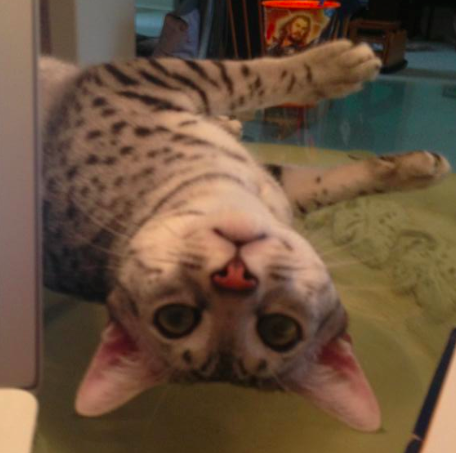
This is my Upside-Down-Face
P.O.V. is a word that throws many new authors into panic. What is THAT? Prisoners of Vietnam? Pets of Vegans? Pals of Viagra? P.O.V. stands for Point of View. Traditionally, I’ve not included this lesson in my teachings on structure, but I am amending that since P.O.V. will affect structure.
The structure of a novel written in first person is very different than a novel using multiple third-person P.O.V. characters. Scenes will need a different kind of balancing, so choosing a P.O.V. should not be taken lightly. Yes, often choice of P.O.V. will come from author voice, but not always. Sometimes genre might influence our decisions as well.
Thus, today, we are going to whiz through Kristen’s P.O.V. Spark Notes.
***Just a quick reminder though. Comment over at my new Dojo Diva blog and there is a separate contest for comments with better odds of winning my 20 page critique. We are talking about How to Be the Sheepdog. Not a wolf, not a sheep, but a sheepdog. Moving on….
Anyway…
We ALL know writing a novel is FAR from easy. We just make it look that way ;) .
Today, I’m putting on my editor’s hat. Many of you decided to become writers because you love to write. Duh. I’ll even bet most of you, back when you were in school, also made very good grades in English. Thus, you might assume that you naturally know how to write a novel that is fit for successful publication.
Maybe you do. But, if you are anything like me when I started out? You might not know as much as you think you do.
Why?
Our high school English teacher didn’t care that we used 15 metaphors on one page. Why? Her goal was to teach us how to properly use a metaphor…NOT to prepare us for a career in commercial fiction. Same with college.
The single largest mistake I see in new manuscripts is the author does not understand P.O.V. and often this is why agents and people like me only need a page or two to know the manuscript/writer isn’t ready to publish.
This is an easy mistake to make, in that, as I stated earlier, formal education classes aren’t neccessarily there to teach us how to be great novelists. Some writers pick up on P.O.V. intuitively, but most of us need to be taught, lest we leave the reader feeling as if she is being held hostage on Hell’s Tilt-A-Whirl.
P.O.V. Prostitution (A.K.A. Head-Hopping)
Let’s step back in time to the days before we all made the decision to become writers. I would guess (hope) all of us were readers. We loved books, and books were a large part of what prompted our career choice. Ask yourself the following questions:
Have you ever tried to read a book, but eventually had to put it down because it was too confusing? You couldn’t figure out who was doing what, and you needed Dramamine to keep up with the perspectives?
Have you ever read a story that was so good you actually felt as if you had taken on the character’s skin? His success was yours, as was his failure. By the final page, you were sad to say good-bye?
P.O.V. used properly can create entire worlds, and breathe life into characters. Used improperly, it can make your reader feel like she’s been bungee-corded to Satan’s Merry-Go-Round—not good.
First, we have to know what P.O.V. is if we hope to use it to our advantage.
P.O.V. stands for Point of View.
Although this literary device is one of the most vital tools an author possesses, it is probably the number one style problem I encounter as an editor. I cannot count how many new writers (and, sadly, some not-so-new writers) give me a blank stare when I write P.O.V. in big red letters all over their manuscripts (and H.H., but we’ll get to that later).
The best way to describe point of view is to think of your story as viewed through the lens of the video camera. How many people (characters) are going to be permitted to hold that camera?

Image courtesy of Jon Gosier, via Flickr Creative Commons
Is your camera going to travel with one main character through the entire story? Or, do others get a turn? Is “God” holding the camera? These are simple questions you can answer to help you select the point of view perfect for your story.
There is no wrong P.O.V., but we do have to be consistent. P.O.V. is a HUGE factor in determining our writing voice.
What are the types of P.O.V.? What are their inherent weaknesses and strengths? For the record, this is HIGHLY redacted for the sake of time.
A quick overview:
First-Person P.O.V—uses “I” a lot. Only one character (the narrator) has the camera.
There are three disadvantages to this P.O.V.
1. This P.O.V uses a lot of “I” which can become repetitive to the point of distraction.
2. The reader can only see and hear what the narrator knows. This limits the flow of information. Probably good for a mystery, but if you aren’t writing a mystery this may not be the right P.O.V for you.
3. First-Person P.O.V is a bugger when it comes to tense. Why? Because First-Person breaks into two camps.
There is the I Remember When camp and the Come Along with Me camp.
One is in past tense, a recollection. “I remember the day my father and I were attacked by a pack of Mary Kay ladies gone feral….”
The other is in present tense, and the reader is along for the ride. “I walk these streets every morning, but today I am just waiting for something to go wrong….”
Note of Caution: It is extremely easy to mix the two camps together. Tense can be problematic…okay, a nightmare.
The benefit of First-Person? First-person P.O.V. adds an intimacy that no other P.O.V. can, and is useful for stories where we might want to withhold information from the reader.
Third-Person P.O.V—is when you, the writer, permit one or more of the characters to lug the camera through your story.
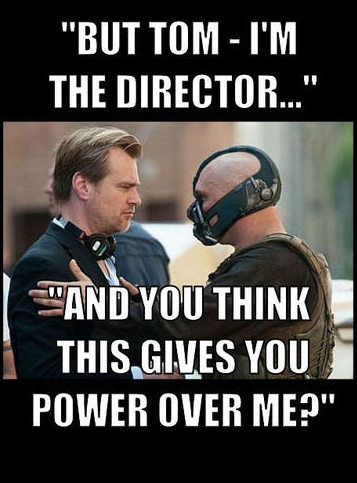
Um…YES.
Third Person Locked allows only one character access to the camera. The entire story is told through what that particular character can experience through the 5 Senses. So, if your character’s eyes are “shining with love,” then she’d best be holding a mirror, or you are guilty of head-hopping.
Third Person Shifting allows more than one character access to the camera. Here’s the rub. Your characters must to play nice and take turns. Only one character with the camera at a time. When the next character wants a turn, there has to be a clear cut.
Think of the director’s clapboard ending one scene before shifting to the next. It is usually a good idea to limit one P.O.V. per scene. When we switch perspectives inside the same scene, that is called head-hopping, and it will confuse and frustrate our readers.
There are advantages to Third-Person Shifting:
1. It can add additional depth and insight to your story.
2. It can allow you (the writer) to hold back information and add to suspense.
3. Third-Person Shifting can allow other characters to take over during emotionally volatile points in the story.
For instance, if your protagonist walks in on her brother lying dead in a pool of blood, the emotions experienced are realistically too overwhelming to be properly articulated by your protagonist. In this scenario, First-Person P.O.V might not be the best fit. The scene might be more powerful if told from someone watching this protagonist react to discovering a deceased loved one.
Ah, but there are also inherent problems with Third-Person Shifting.
1. Your characters must play nice and take turns. Otherwise, your reader will likely become confused and eventually frustrated.
2. It is best to permit camera access to key characters only. The reader has to stay in one head long enough to feel connected. Too many perspectives can easily become overwhelming and dilute the strength of your characters.
Omniscient P.O.V is when “God” gets to hold the camera.

Oh stop mucking it up and give Me the camera…
This P.O.V is like placing your camera up high over all of the action. The narrator is omnipresent and omniscient. “If Joe had only known who was waiting for him outside, he would have never left for that pack of cigarettes.”
Joe cannot experience anything beyond the 5 Senses (third-person). So, unless Joe is actually Superman and possesses X-Ray vision, it takes an omniscient presence to tell us someone bad is lurking outside waiting to do Joe harm.
There are advantages to Omniscient P.O.V.
1. Omniscient can relay information that would be far too overwhelming to describe if limited to the 5 Senses. Epic battle scenes are a good example.
2. Omniscient can give information critical to the story that the character doesn’t have to personally know. For instance, in NYTBSA Bob Mayer’s Area 51 Series (which I HIGHLY recommend), he relays a lot of factual and historical information that is critical to understanding the plot. But, it would really seem bizarre to the reader if his characters just started spouting off the history of the pyramids like an Egyptologist.
To avoid this jarring scenario, Bob used an omniscient presence to relay the information so the prose would remain remain nice and smooth and the fictive dream could stay in tact.
There are disadvantages to Omniscient P.O.V.
1. Third-Person P.O.V. and Omniscient P.O.V. are VERY easy to tangle together.
2. Omniscient P.O.V. and Head-Hopping are not the same, but are easy to confuse. I’ve edited many writers who believed they were employing Omniscient P.O.V. In reality, they were just letting every character in the book fight over the camera simultaneously, leaving me (the editor) feeling like I was trapped in the Blair Witch Project.
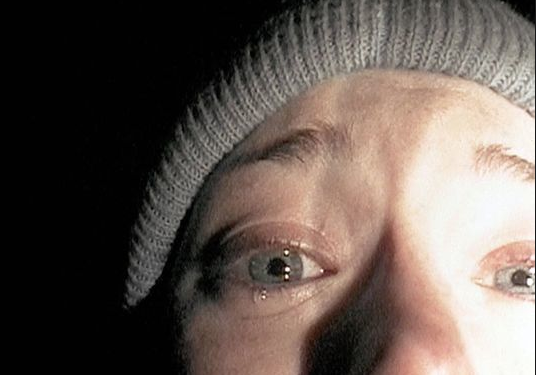
Whose head am I in? I can’t tell. Help meeeee…..
Proper use of P.O.V. takes a lot of practice to master. It is very easy to shift from one type of P.O.V. to another, or what I like to call “P.O.V. Prostitution” or “Head-Hopping.”
Key Points to Remember:
In First-Person—Come Along with Me stories can easily turn into I Remember When stories (or vice versa). Tense is a big red flag. Do you shift from present to past or past to present? Pay close attention to verbs.
In Third-Person (Locked & Shifting)—Characters will only play nice and take turns if you, the writer, force them to. Make sure whatever is happening in a scene is something that could be filtered through ONE character’s 5 Senses.
In Third-Person (Locked & Shifting) —“God” is really bad about grabbing your character’s camera, so keep an eye on Him. If there is suddenly information your character has no way of knowing through the 5 Senses, that is a big clue the Big Guy snagged your camera. Just remind Him nicely of commandment number eight, and ask Him to give the camera back.
In Omniscient—“God” is in charge. Be careful your wide-lens isn’t zooming in and out and making your reader dizzy in the process.
P.O.V. is one more reason it is critical for writers to read if they hope to become great authors. Read, read, read. Read all kinds of books by all kinds of authors using different P.O.V.s to see how it is done well.
EXAMPLES:
Veronica Roth brilliantly employs the first-person Come Along With Me in her Divergent trilogy. Her choice of P.O.V. gives an intimate feel no other P.O.V. can, and, since it isn’t an I Remember When story, Roth is able to maintain reader suspense.
Stephen King does a great job of using first-person in an I Remember When style in The Green Mile. King chose this P.O.V. for a very specific reason, which I will not say so as not to spoil the ending even though y’all have had like, TWENTY YEARS to read it.
Dennis Lehane does an amazing job of employing omniscient in Mystic River. If you think you might want to use omniscient, I’d recommend reading him.
James Rollins uses third-person shifting very well in The Doomsday Key. Third-shifting is generally a great P.O.V. for thrillers in that it helps manage/reveal a lot of information that the protag may or may not know.
I would recommend Jonathan Maberry’s Patient Zero: Joe Ledger Series. I HIGHLY recommend Iron River by T. Jefferson Parker. Both these authors mixed third-limited and first-person and the effect is impressive.
P.O.V. when used properly can take a story to a whole new level. Read, experiment and practice. I know I just touched on a handful of suggestions, so feel free to add your thoughts, expound, ask questions.
Also, if you want to meet me and author and Hollywood TV/Film Producer , we will be in Boaz, Alabama on June 15th. Joel will be doing a workshop called, “Catching Your Muse: How to Claim Your Artistic Spirit” and I will be there to help any of your social media angsts. We can also plot global domination using a weaponized Bedazzlers and trained hamsters….so REGISTER HERE.
I LOVE hearing from you!
To prove it and show my love, for the month of JUNE, everyone who leaves a comment I will put your name in a hat. If you comment and link back to my blog on your blog, you get your name in the hat twice. What do you win? The unvarnished truth from yours truly. I will pick a winner once a month and it will be a critique of the first 20 pages of your novel, or your query letter, or your synopsis (5 pages or less).
Remember, for MORE chances to win and better ODDS, also comment over at Dojo Diva. I am blogging for my home dojo and it will help the blog gain traction.
Both winners will be announced next blog. We just came in from assessing flood damage at our ranch and I haven’t had a chance to tally the winner. So stay tuned!
For those who need help building a platform and keeping it SIMPLE, pick up a copy of my latest social media/branding book Rise of the Machines—Human Authors in a Digital World on AMAZON, iBooks, or Nook.


May 28, 2015
How to Manage Scenes in a Novel—Structure Part 8

And….ACTION!
As a fiction author, you will often feel like an acrobat spinning plates while standing on your head and juggling fiery chainsaws. There are so many components to keep track of, lest you end up down the Bunny Trail of No Return. Organization is key when it comes to being a successful novelist.
Before we continue, if you want better odds of winning my 20 page critique at the end of the month, I am running a separately drawn contest over on my Dojo Diva blog where I am talking about why everyone (but especially females) needs at least some basic self-defense training. Comments count for one entry. Comments with a hyperlink count for two. And you get to learn about beating up bad people.
Moving on…
We have spent the past few weeks studying the fundamentals of what makes up a novel, and today we are going to discuss the actual scenes that make up a novel and how to keep track of them. It is easy to get lost when dealing with a structure as complex as a novel, so I hope to give you a nifty tool to keep everything straight.
First, let’s talk about scenes.
My friend and mentor James Scott Bell has given me permission to use a sample of his teachings as a guide, and again I strongly recommend getting his book. I was a pantser for ages and revisions were a nightmare. Plotting might as well have been sanskrit until I read his books and instead of reinventing my own methods, I just like to tell writers about the good stuff.
According to James Scott Bell’s Plot & Structure, scenes do four things. Bell calls these the four chords of fiction:
The two major chords are: (1) action and (2) reaction.
The two minor chords are (1) setup and (2) deepening.
Back when I used to content edit, I was known to draw cute little cartoon flies on the page when the story took off down a bunny trail and lost my interest. This became known as my, “Fly on the Wall of ‘Who Cares?’” and was a signal to the writer that this was a section with no real purpose so it needed revision, tightening or to be cut completely.
The reader is a fly on the wall when it comes to the world we are creating. Make them the fly on the wall of something interesting at all times.
How do we accomplish this?
All Scenes Need Conflict
Conflict is the fuel that powers the story’s forward momentum. “Scenes” that are merely back-story, reflection (rehash of what the reader already knows) or information dump, slow down the story and make the reader either want to skim ahead or put the book down. Bad juju.
We want our readers hooked from the beginning until we finally let them go on the last page. How do we accomplish this? We add lots of conflict.
Scenes, according to Bell, need three components, collectively known as HIP—Hook, Intensity & Prompt.
Hook—interests the reader from the get-go. This is why it is generally a bad idea to start scenes with setting. Waxing rhapsodic about the fall color is a tough way to hook a reader. If you do start a scene with setting, then make it do double-duty. Setting can set up the inner mood of a character before we even meet him. Setting should always be more than a weather report. Try harder.
Intensity—raises the stakes. Introduce a problem. Scenes that suddenly shift into reverse and dump back-story KILL your intensity. Cut scenes at meals unless there is a fight (okay, just something tense). If your characters are in a car, they better be in an argument or a car chase. Also cut any scenes that the sole purpose is to give information. Have a scene that’s sole purpose is two characters talking about a third? CUT! CUT! CUT!
We are writing novels, not screenplays for Days of Our Lives.
Prompt—leave the scene with work left undone and questions left unanswered. If your character is relaxed enough to happily go to bed at the end of a scene, that is a subconscious cue to your reader that it is okay to mark the page and close the book. There should always be something unsettling that makes the reader want to know more.
Going back to the chords of the writing. Every scene should involve one of your key characters in pursuit of an interesting goal that is related to the overall conflict of the story. Each of these scenes are stepping stones that take your character closer to the final showdown. Most of the time, it will feel like two steps forward and one step back.
Your POV character (protagonist) sets out to do X but then Y gets in the way. Your character then will have some kind of a reaction to the setback.
So we have the major chords I mentioned earlier:
ACTION–> REACTION to the obstacle
Now when we add in the minor chords, it might look something like this:
Setup–> ACTION–> obstacle–> REACTION to the obstacle–> deepening
Setup and deepening need to be short and sweet. Why? Because they don’t drive the story, conflict does. We as readers will need a certain amount of setup to get oriented in what is happening, but then drive forward and get to the good stuff. Deepening is the same. We want to know how this conflict has changed the course of events, but don’t get carried away or you risk losing your reader.
Remember when we talked about antagonists? How the BBT is responsible for the problem in need of resolution, but that EVERY scene should have an antagonist.
Allies will often provide the lion’s share of the conflict of a story. One of my favorite movies is Finding Nemo. Darla the Fish-Killer is the BBT, because had she wanted a puppy for her birthday, Nemo would have never been taken and wouldn’t be in danger. But who creates MOST of the conflict? Ally, Dori. For most of the story. Marlin and Dori are at odds.
Marlin wants to keep searching for the clue to find his son.
Dori wants to talk to the sharks and attend a Fish Anoymous meeting.

Image via Pixar’s movie “Finding Nemo”
So how do you keep track of all these elements? The note card is a writer’s best friend. We will discuss different methods of plotting in the future, but I recommend doing note cards ahead of time and then again after the fact. I use a very cool tactic from screenwriter Blake Snyder’s Save the Cat.
On each note card, I write the location, then a one-sentence header about what the scene is about. Then there is a neat little symbol for conflict (>
Characters should be changing emotionally. If your protag enters on a high note, crush it. Enters on a low? Give some hope. If a character is constantly okey dokey, that’s boring. Conversely, if a character is always in the dumps, it will wear out your reader and stall the plot.
I also note any facts I might need to keep up with. Has my main character suffered an injury? Lost her weapon? Gained a weaponized Bedazzler and a pet hamster?
Let’s look at an example from the movies. Romancing the Stone.
So the card might look something like this:
Jungles of South America (Location)
>< Joan (protag) and Jack (love interest/antagonist)
Joan wants a guide to get her to Cartajena, Colombia to trade the treasure map for her sister.
Jack wants to recapture the exotic birds he lost when the bus crashed into the back of his truck.
-/+ Joan finally convinces Jack to take her to Cartajena. (Note she started on a low. She was lost, in a crash and far away from Cartajena. She ends on a high note. Jack agrees to guide her to her destination)
Joan and Jack decide to go to Cartajena (decision), but then bad guys arrive and start shooting at them (prompt).
Yes, Blake Snyder’s system is designed to keep up with all the scenes a movie, but it can do wonders for novelists, too. When I finish my first draft, I go back and make set of cards. Using this system makes it painfully clear what scenes are in need of a total overhaul.
If I can’t say in one sentence what the scene is about, then I know my goal is weak, nonexistent or unclear. Too many people in conflict? Conflict might be muddy. Go back and clarify. If there isn’t any emotional change, then that’s a big red flag that nothing is happening—it’s a “Fly on the Wall of ‘Who Cares?'”
If I find a scene that’s sole purpose is information dump, what do I do? I have three choices. 1) Cut the scene totally. 2) Fold it into another scene that has existing conflict. 3) Add conflict. Note cards also make it easy to spot bunny trails—goals that have nothing to do with the A or B plot.
This tactic can help make a large work manageable. If you are starting out and outlining? Make note cards for each scene and who you foresee being in conflict. If you already have your novel written, but you want to tighten the writing or diagnose a problem you just can’t see? Make note cards.
Keeping organized with note cards is an excellent way to spot problems and even make big changes without unraveling the rest of the plot. There are, of course, other methods, but this is the one I’ve liked the best. Note cards are cheap, portable and easy to color code (you can also sub an Excel spreadsheet for cards).
For instance, each POV character can have a designated color. Using these cards makes it much easier to juggle all the different elements of great novels—characters, conflict, inner arc, plot, details.
Have any questions? Are there other methods that have worked for you? Please share so we all can learn. What is the biggest challenge you face when it comes to plotting?
I LOVE hearing from you!
To prove it and show my love, for the month of MAY, everyone who leaves a comment I will put your name in a hat. If you comment and link back to my blog on your blog, you get your name in the hat twice. What do you win? The unvarnished truth from yours truly. I will pick a winner once a month and it will be a critique of the first 20 pages of your novel, or your query letter, or your synopsis (5 pages or less).
Remember, for MORE chances to win and better ODDS, also comment over at Dojo Diva. I am blogging for my home dojo and it will help the blog gain traction.
For those who need help building a platform and keeping it SIMPLE, pick up a copy of my latest social media/branding book Rise of the Machines—Human Authors in a Digital World on AMAZON, iBooks, or Nook.




